I visited two small towns in the central part of Istra on the 14th of January 2023. The distance between them is about six or seven kilometers.
Sveti Lovrech is the bigger and, at least for certain aspects and from a certain angle, the more attractive of the two towns. It was also chronologically the first one I visited on that occasion, so I'll start today's post there.
The opening photograph shows a line of old houses along the main road leading to the town's historic center behind the well-preserved medieval gate.
Here you can take a look through the gate but before entering ...
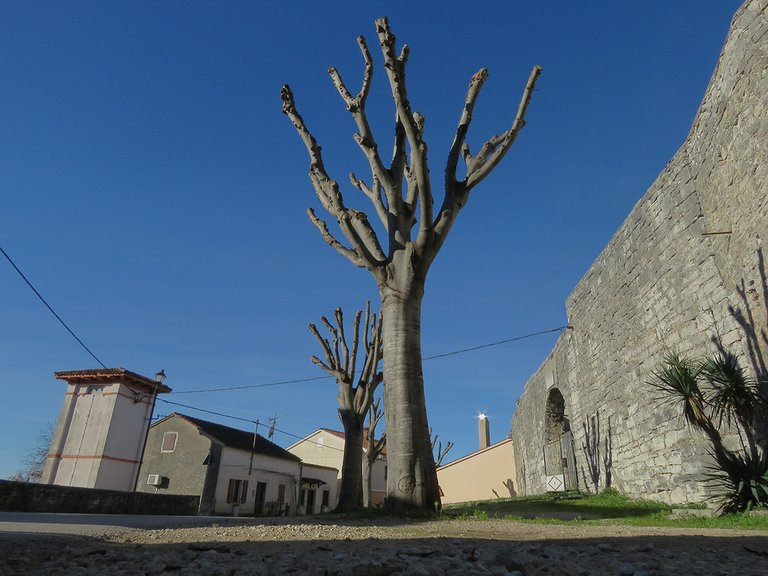
... I would like to show you a few things I photographed on the way there.
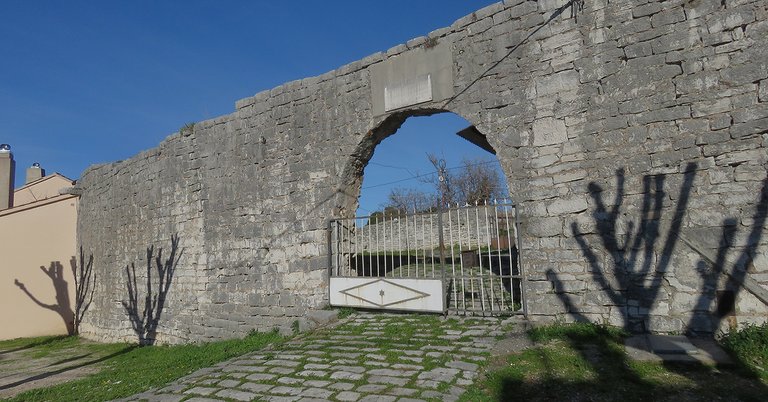
This lateral gate has a different shape and proportion, that's all I'm sure about it. Maybe is part of the fortification from a different period. Or is part of the same wall but the gate had a different function. In the following photograph ...

... the focus is on the stylish shadows of the trees that grow by the side of the road.
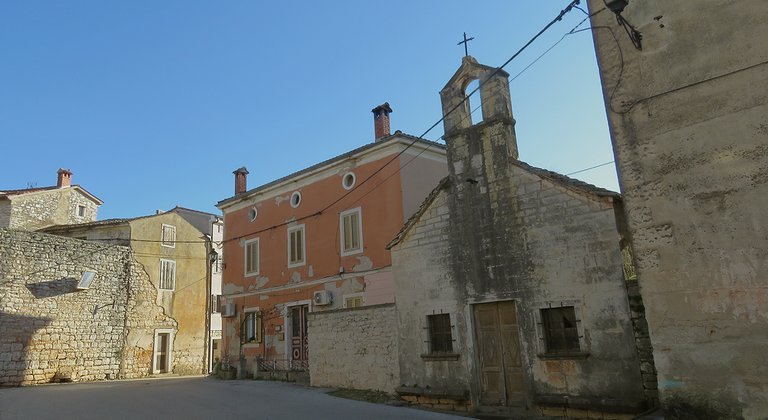
The Church of Saint Blaise is outside the town's wall but very close to the main gate. About thirty-forty meters only, in my estimate.
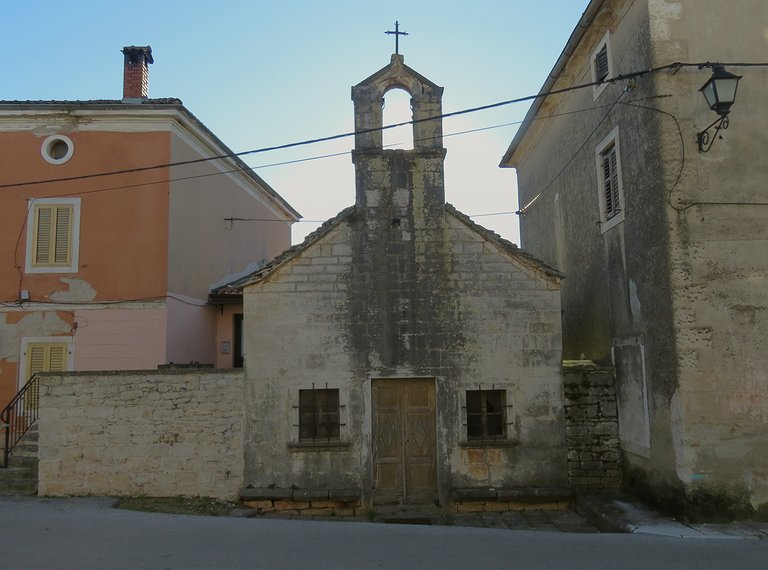
This small church was built in 1460.
Here you can see some of the old buildings that form the town's compact center, and you can see them from a place outside the protective wall.
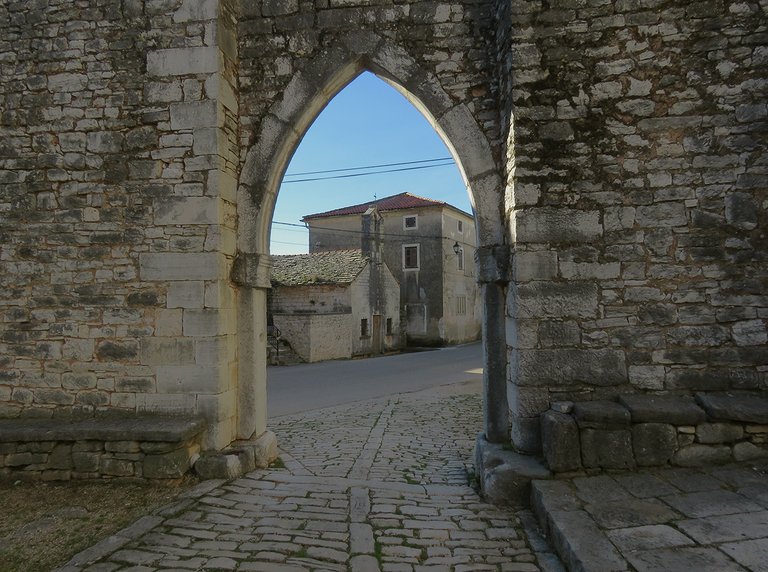
I just passed through the gate when this photograph was taken. Saint Blaise is visible in the background.
Here you can see the merged stone houses that form a very compact neiberhood inside the town's wall.
In this photograph, I zoomed in on the window situated very low on one of the houses presented in the previous shot. I like the design of its old rusted bar very much.
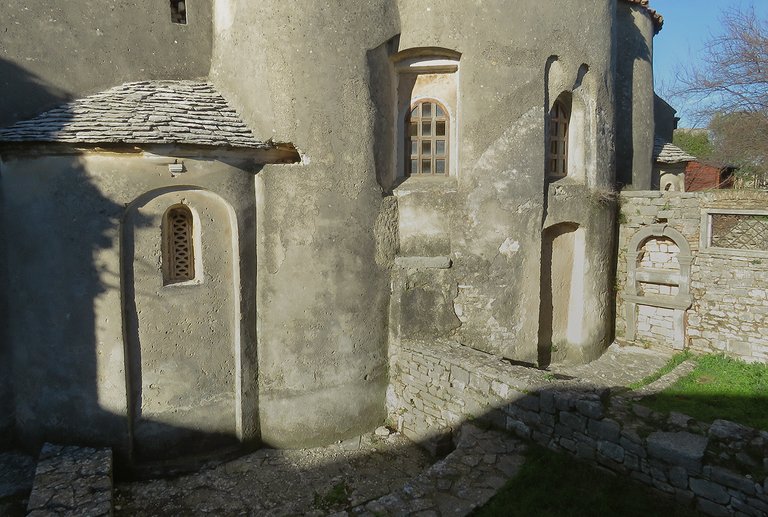
This is the rear part of the Church of St. Martin.
The town's loggia is merged with the southern lateral wall of the church.
The square behind the gate looks great when photographed from there. The elegant columns of the loggia, shown in the foreground, give a sense of depth and perspective to this shot.
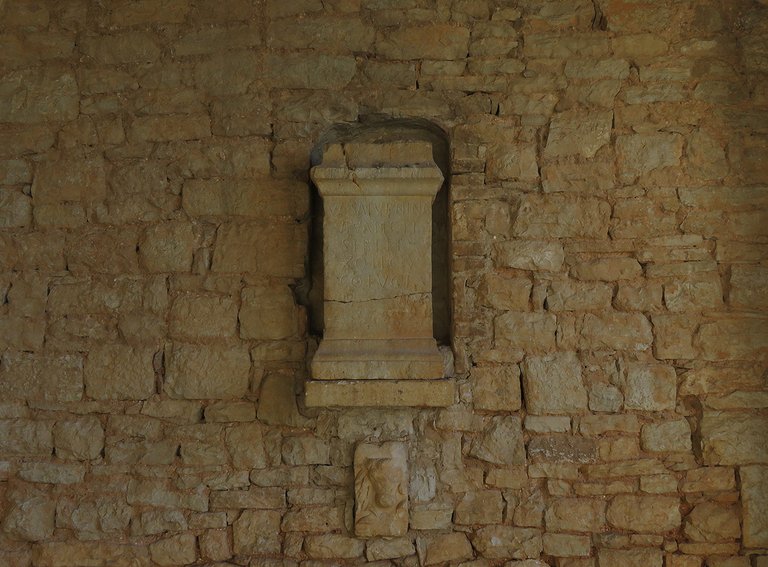
Quite a few different stones and stone artifacts or their fragments are incorporated into the loggia as we see it today. All that eclectic stony stuff dates from various periods between the times of the Roman Empire and the 19th century.
I can't tell you much about each of these fragments of history but I can at least provide good photographs that show most of the interesting details. If you are fluent in Latin, maybe you can extract some useful information from the silent thing displayed in the center of this enlargeable picture.
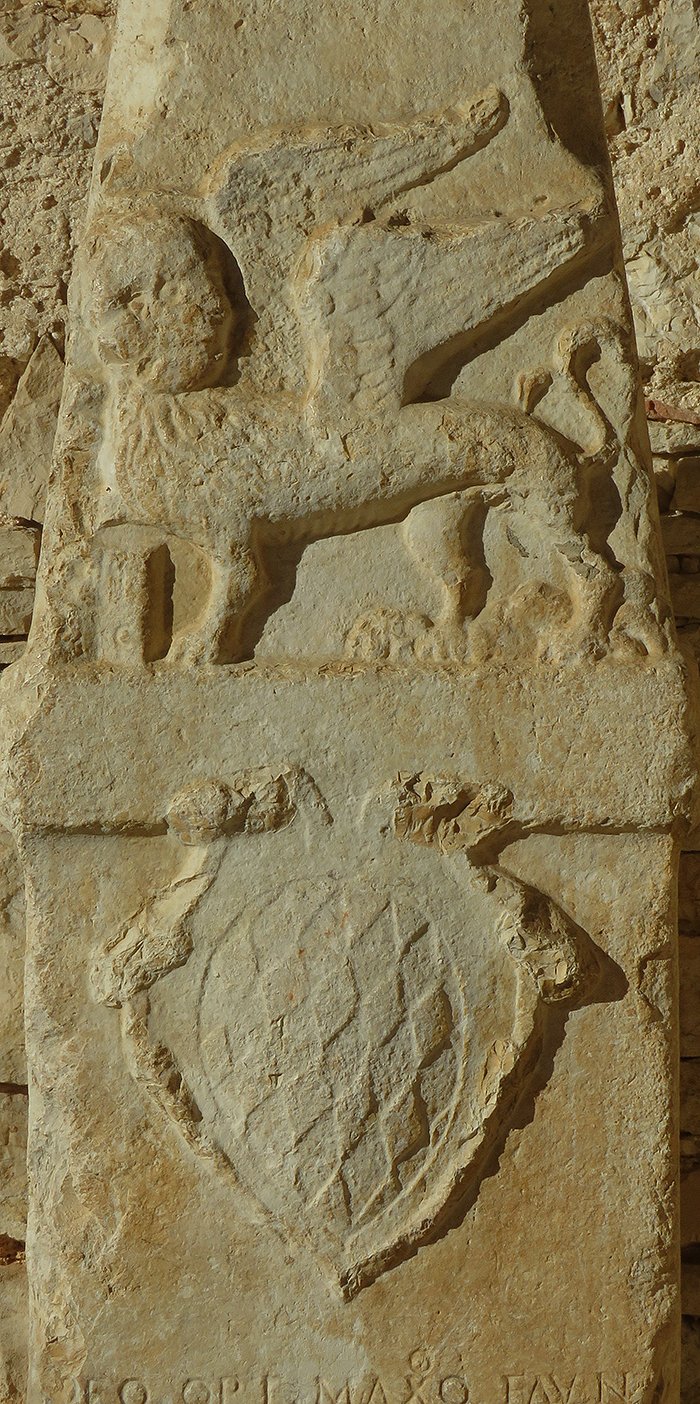
Due to the winged lion, the heraldic symbol of Mark the Evangelist ...
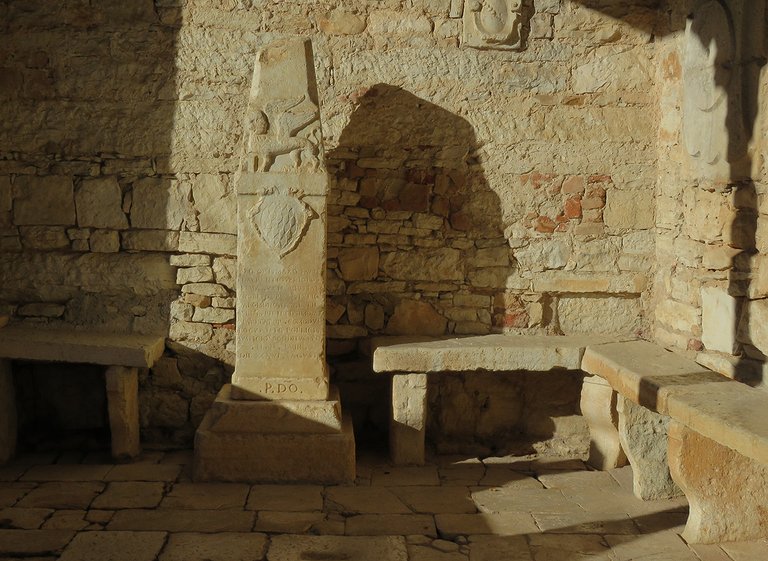
... I can confidently say that the column shown in this and the previous photograph belongs to a period when the Venetian Republic administrated the town as one of its strongholds in the Istra peninsula.
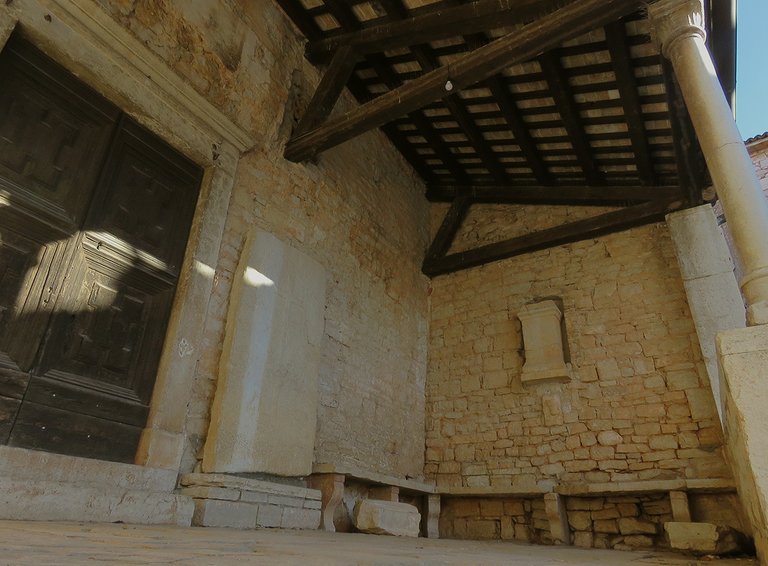
According to some historians, the loggia was built in 1558. Or more precisely, it was finished that year; exactly on the 26th of August 1558. That date can be found in one of the old inscriptions there in the loggia.
Other sources date the thing back to the 13th or 14th century.
Besides providing a public gathering place where juridic and economic things can be discussed and settled as any medieval loggia does, the loggia in Sveti Lovrech also serves as the porch of St. Martin.
The door shown in the above photograph leads to one of the two lateral naves of the church.
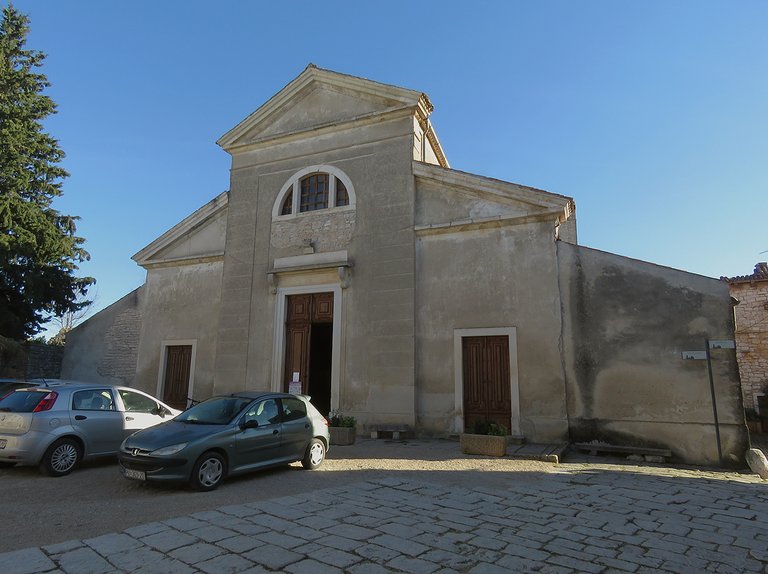
Here you can see the neoclassical front facade of St. Martin, the biggest church in town.
Until 1838, when its current look was defined, the front facade was considerably different.
The church is much older than this facade may suggest.
Believe it or not, St. Martin opened just as I arrived at the square in front of its entrance so I was able to take a few shots of its interior.
Let's enter.
The lady shown in this photograph was cleaning and preparing the place for a mass or some similar event that was about to begin very soon.
The priest, who can't be seen here said that I have ten minutes at best to enjoy the quiet atmosphere and photograph whatever I like.
No problem - I replied - That's more than enough, reverend, I can be surprisingly quick if the occasion requires me to be.
The Church of St. Martin was built in the 11th century but some of its elements probably date from the period between the 6th and 8th century.
Plenty of the original 11th-century material is still present in the building's interior.
That includes the beautiful authentic columns and fresco paintings shown in the above photograph. You can take a better look at the details if you enlarge the picture by clicking on it.
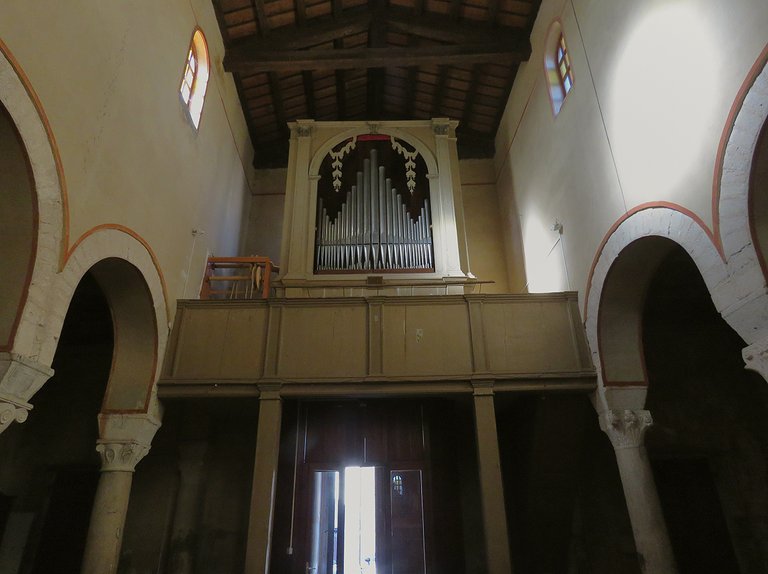
The beautiful organ placed above the entrance was added in 1735. This is the oldest still functional church organ in Istra.
Here you can see a side chapel with a small altar, not far from the entrance.
Here you can see the details of a nearby niche.
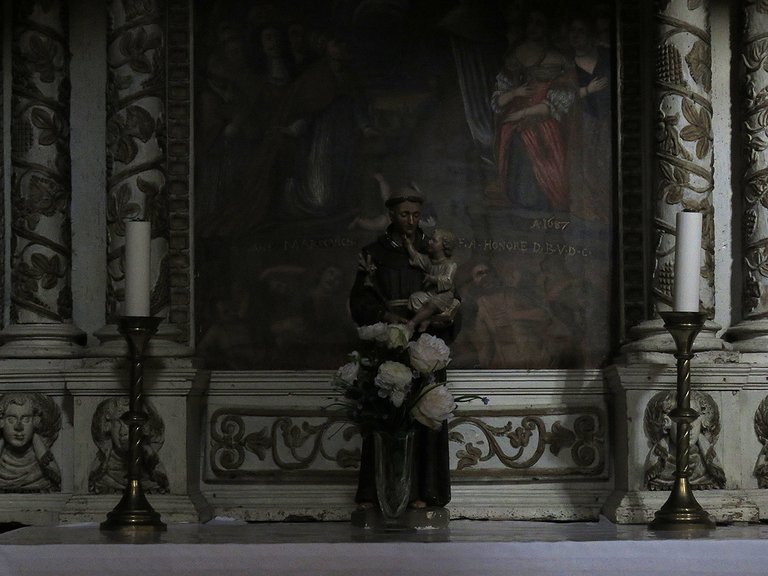
I zoomed in a bit more in this shot. Getting these photographs wasn't easy becouse the light was low.
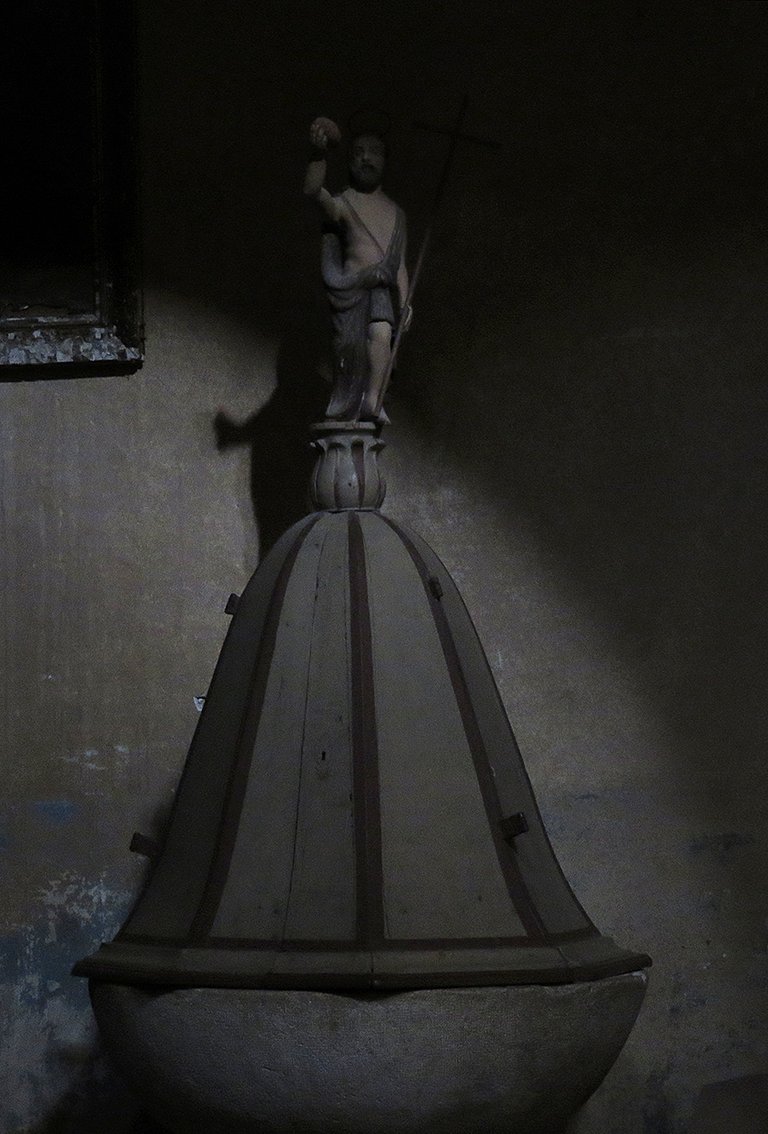
This artifact was dipped in an even deeper gloom.
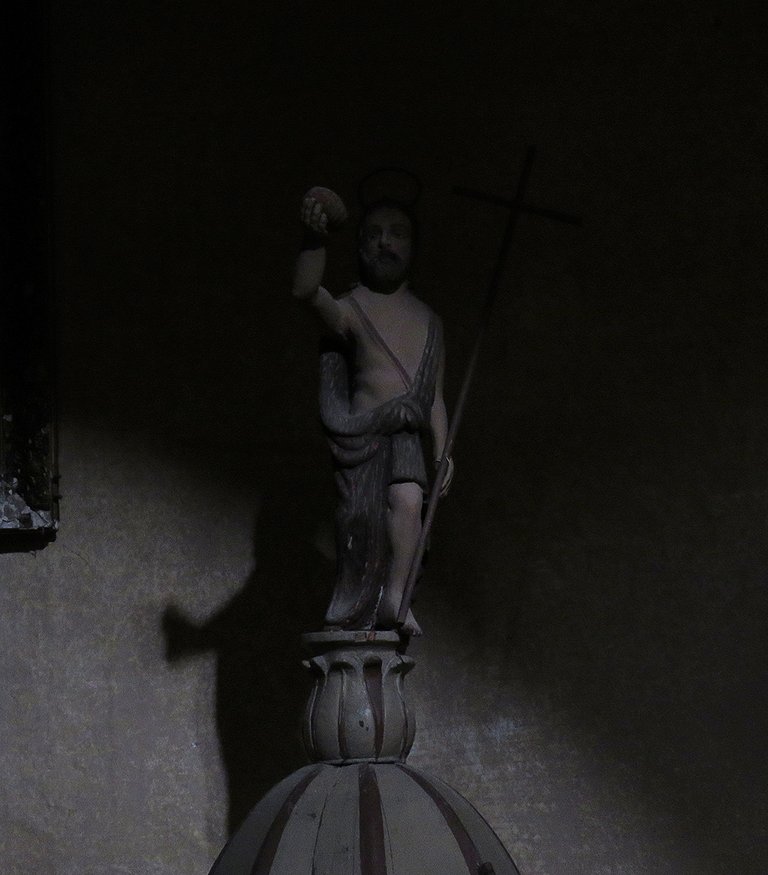
Here I zoomed in on the small statue on its top.
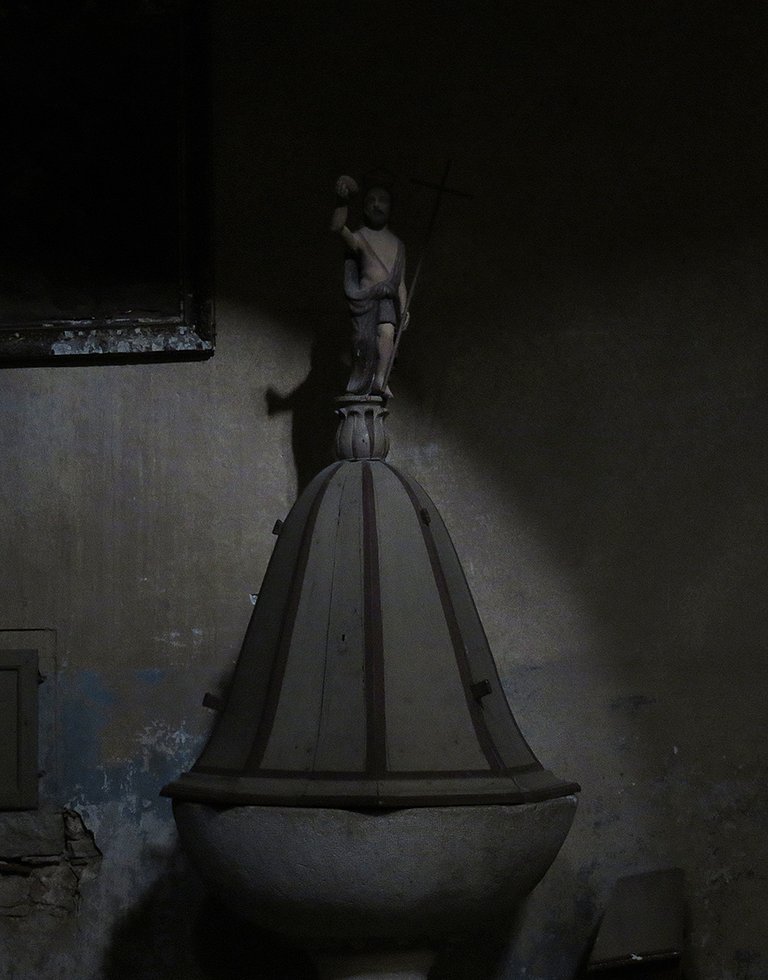
This object looks like a holly water font with a roof to me, and I like its design very much, that's all I can say about it. The following photograph ...
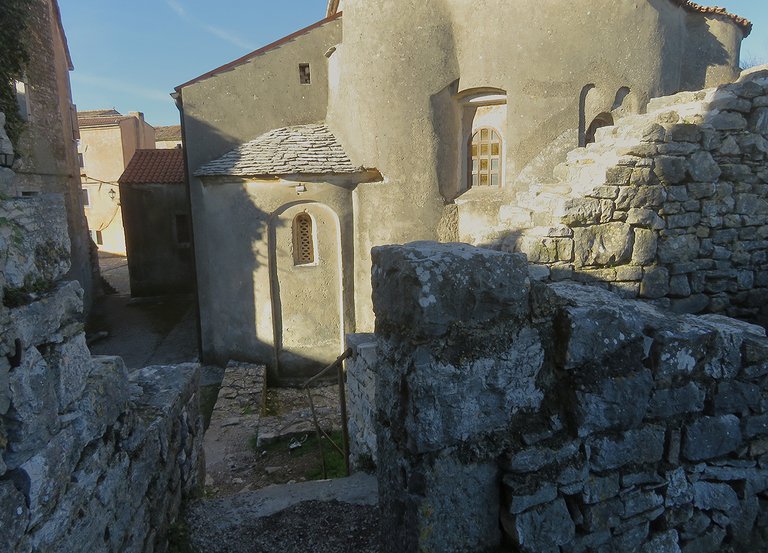
... was taken in the light of the day. It shows the remains of a stretch of the town's wall from 1452 and the rear facade of the church.
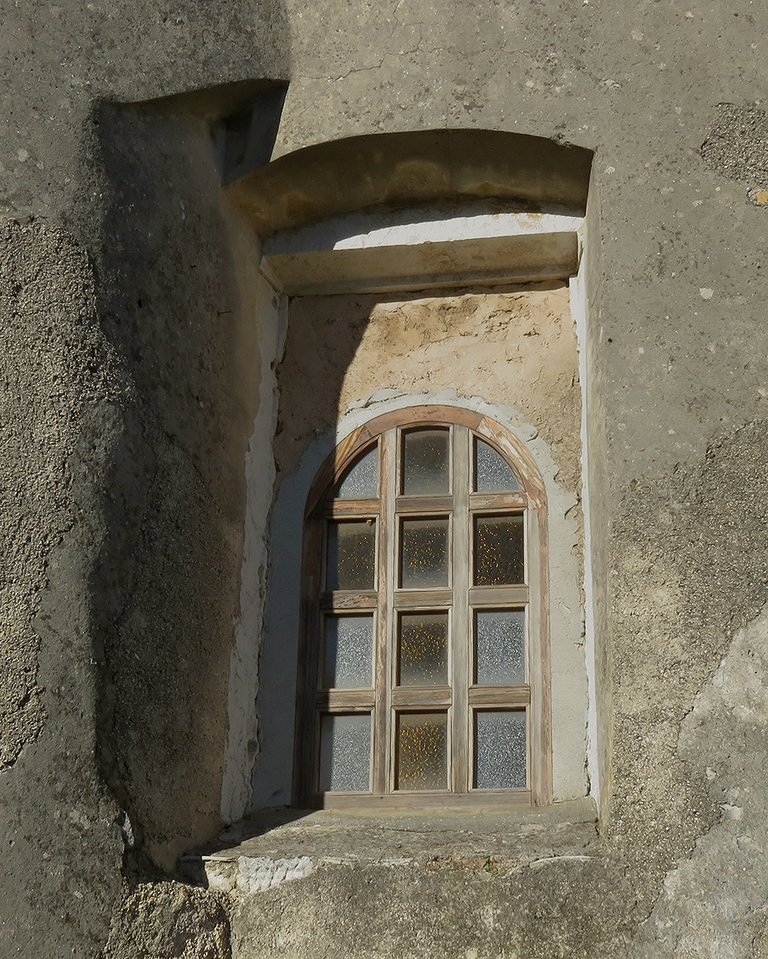
Here I zoomed in on one of the windows of the largest apse in the rear of St. Martin.
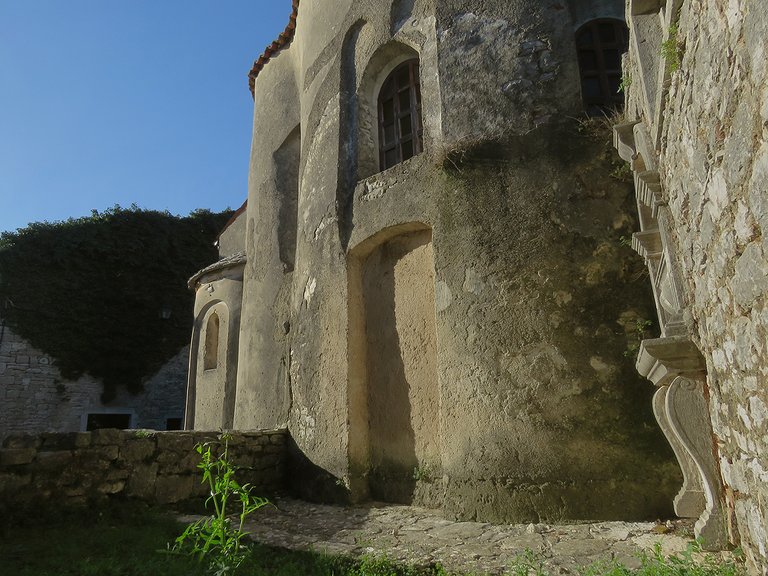
From the outside, the rear is the most interesting part of the building to me.
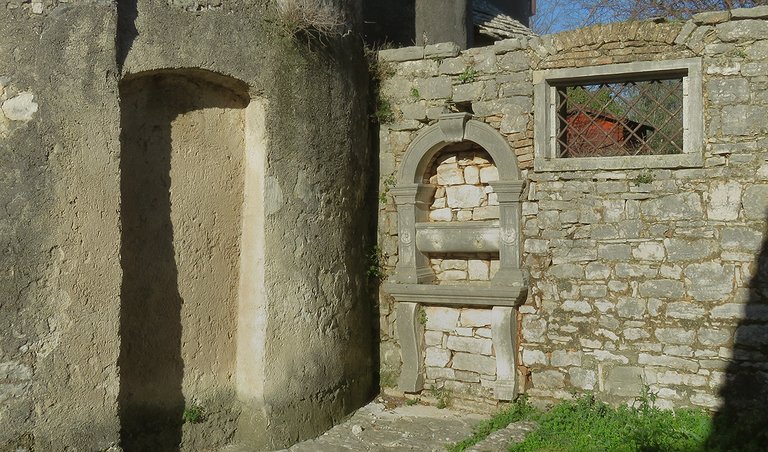
A mixture of various layers of history and traces of redoing are visible in the architecture all around the town.
The space between the rear of the church and the nearby line of fortification was too narrow for the wide lens of my camera so I wasn't able to show the entire rear facade in one picture. After a bit of thinking, I found a solution to that problem. I took a series of consecutive shots while slowly moving the camera to get the whole scene covered, and then ...
... I used them to create this GIF.

The 21-meter-tall church tower behind St. Martin was built in 1452 during a project of enlarging and reinforcing the town's wall. According to some sources, one of the defensive towers stood in that place before the church tower.
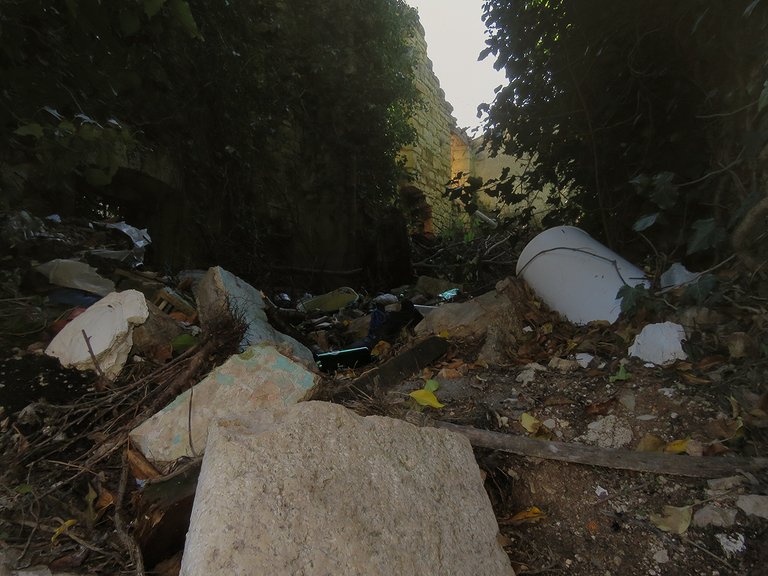
In the same area behind the church, I also photographed a bit of rubble and garbage in one of the ruins abundantly overgrown with ivy.
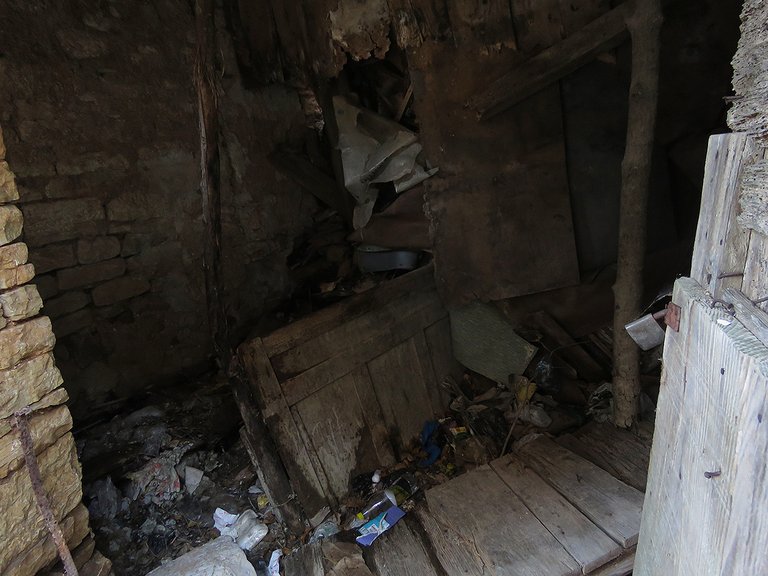
Here you can see more decaying stuff from the cellar of the neighboring abandoned building. In the following photograph ...
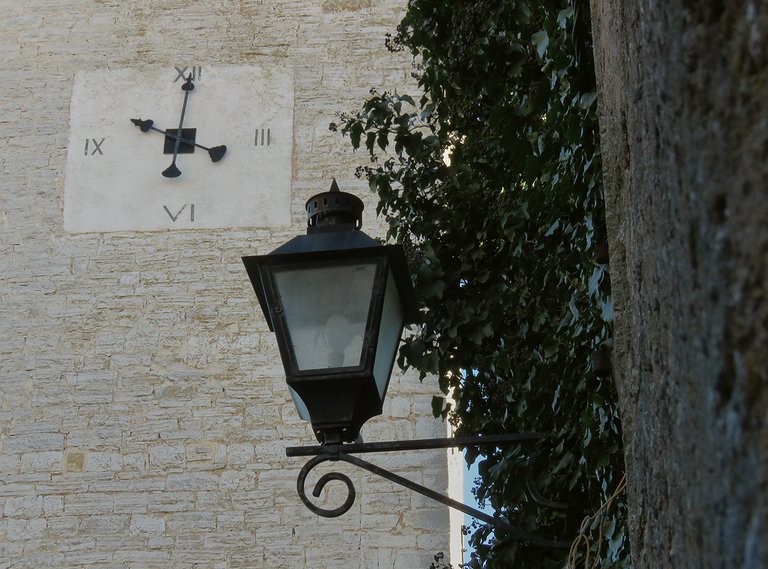
... the focus is on the lantern mounted higher on that same building.
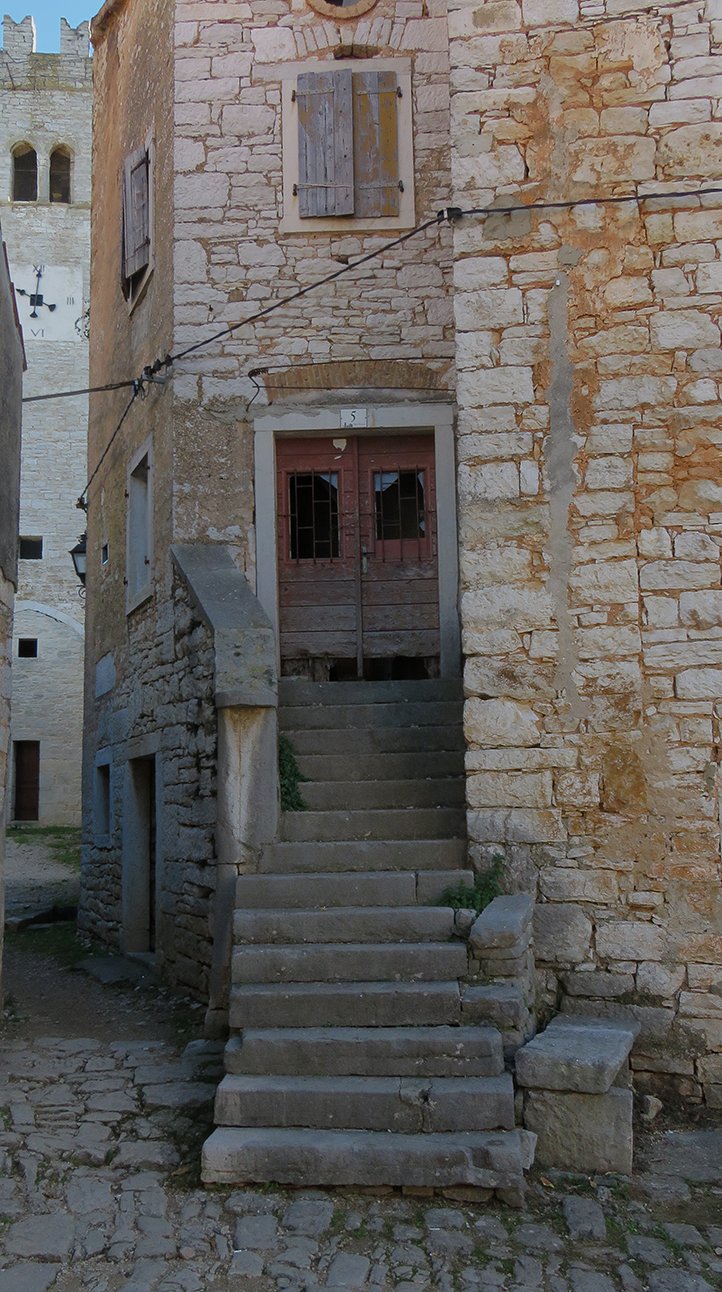
The next in the row of connected buildings is in much better shape.
In this photograph, I zoomed in on the entrance door at the end of the stairway.
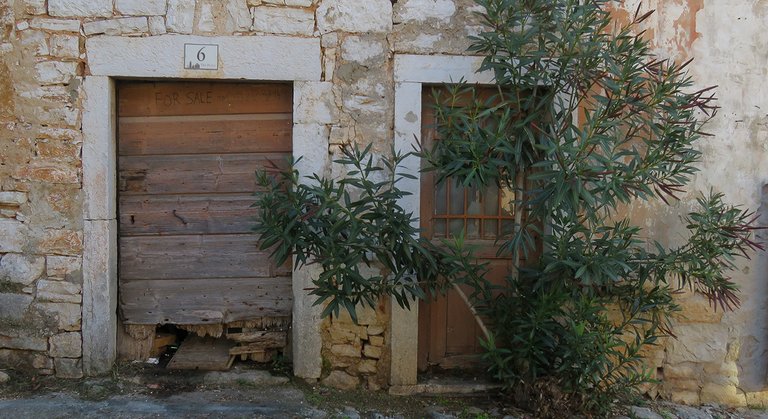
Here you can see the doors on the ground floor of the same building. Some minutes later, while passing by St. Martin's lateral facade ...
... I stopped to take another shot from the loggia. The following photograph ...
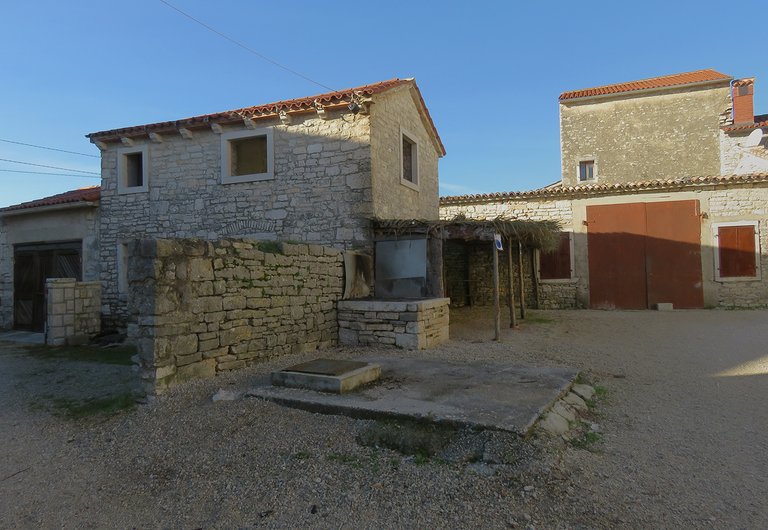
... shows some of the houses situated across the pretty large open, gravel-covered space in front of the church.
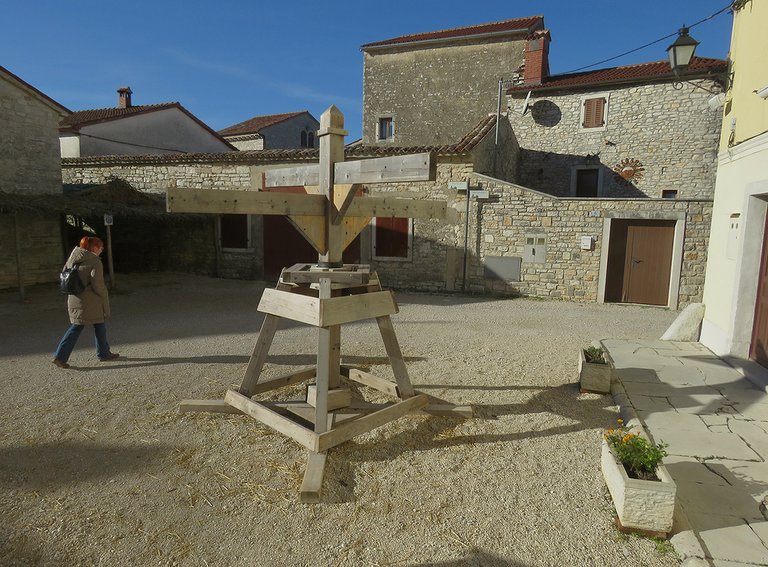
This thing that looks like a replica of some medieval machine to me was displayed there.
Very soon I reached a smaller but very similar square or crossroad surrounded by blocks of old houses made of stone.
An old, deformed rafter made of wood was protruding from the stones on the top of a ruined building surrounded by houses in better shape.
Two pigeons were resting on that piece of old wood.
Here I zoomed in on the bird on the top of the rafter.
In this shot, I used the zoom of my camera to bring closer the small cluster of birds on the stony part of the same ruin. In the following set of four photographs ...
... you can observe for a while the activities of the same group of pigeons.
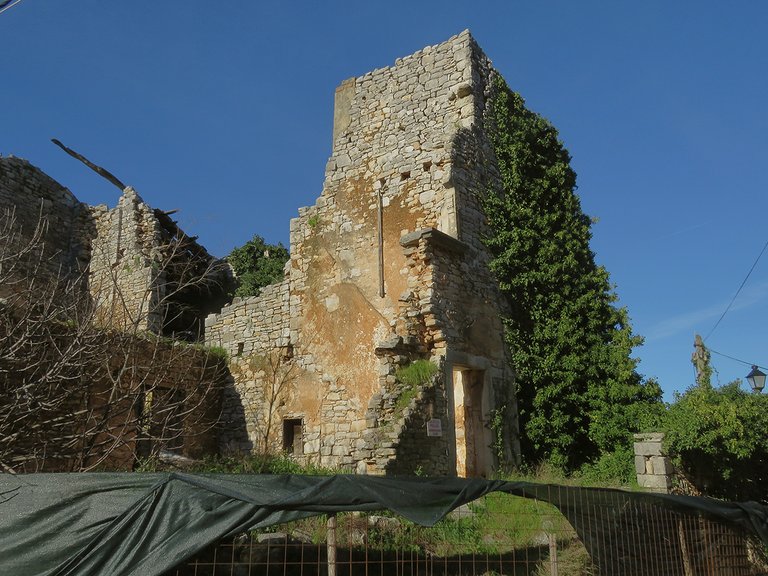
Here I zoomed out again.
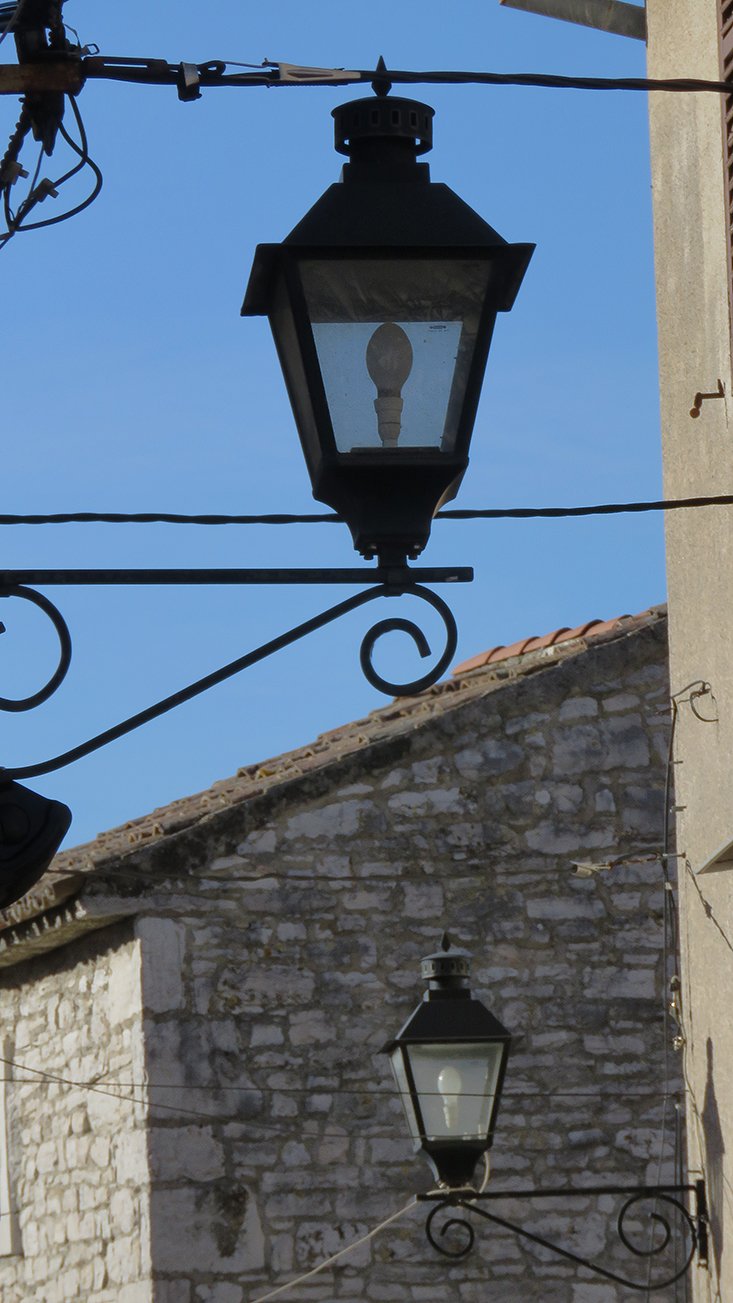
I photographed some lanterns too in that part of town.
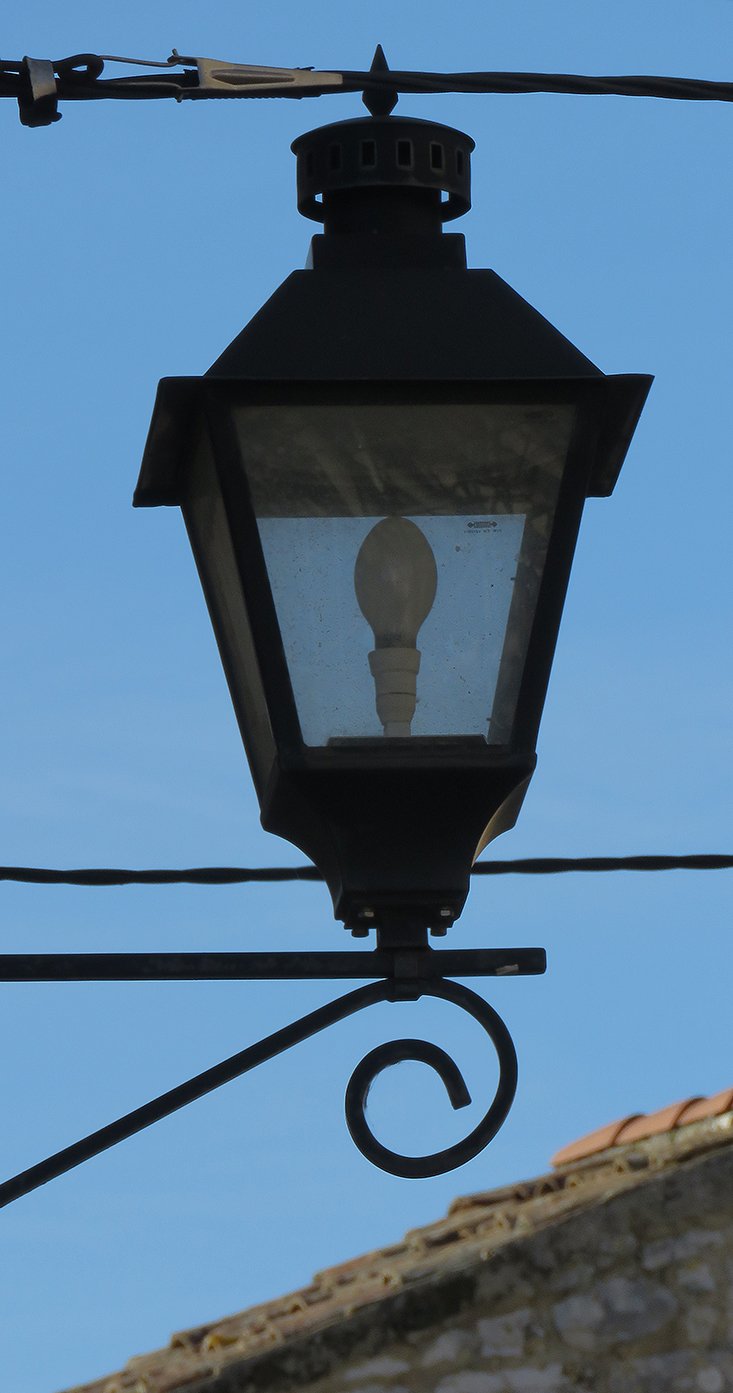
The focus is on only one of those lanterns in this shot.
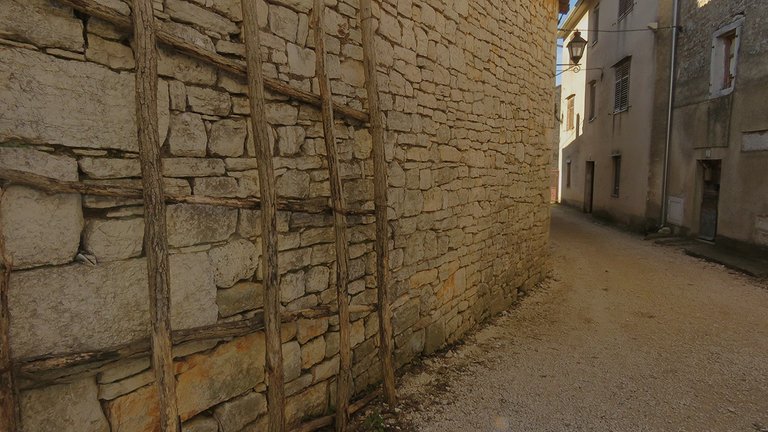
Here you can take a look at the gravel road under the lanterns.
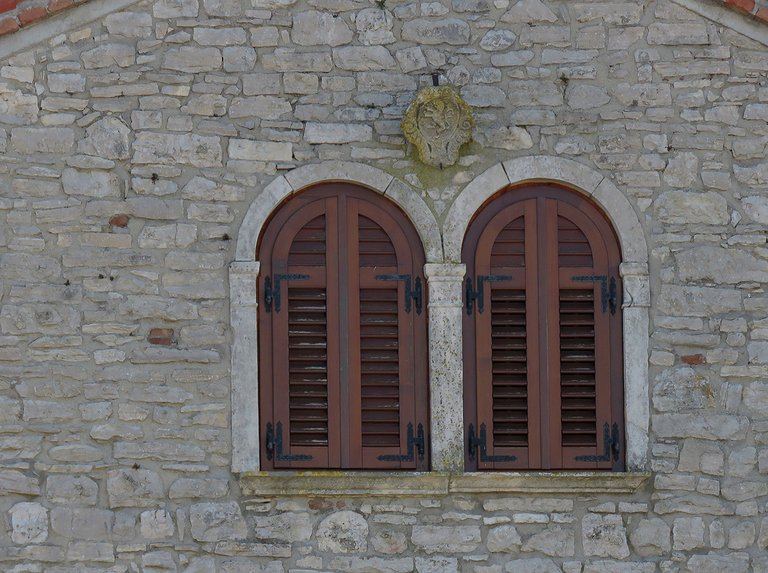
These two windows on the renovated house from the 15th century looked pretty photogenic ...
... so I zoomed in on them a bit more.
Here you can see a friend who was there with me standing next to a building that was probably used as a storage for weapons, and it was first mentioned and shown in drawings in a document from 1397.
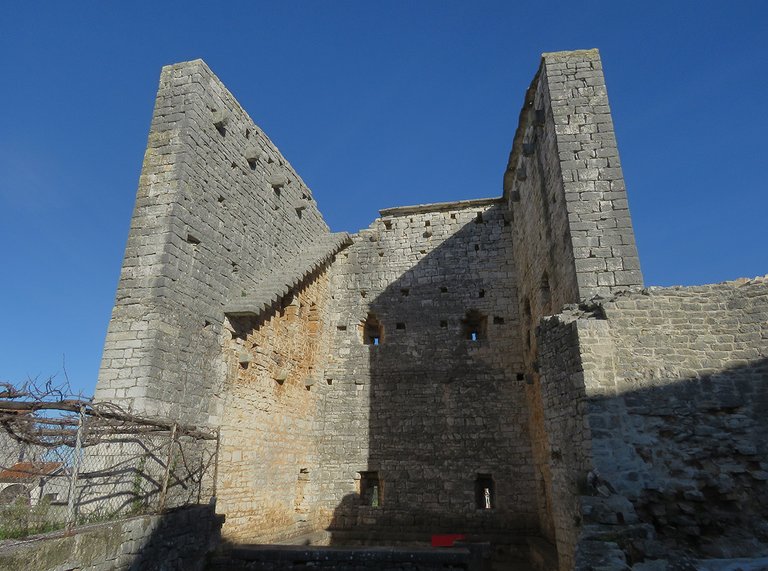
Next to the building shown in the previous photograph, there is a partially preserved tower called Fontanella.
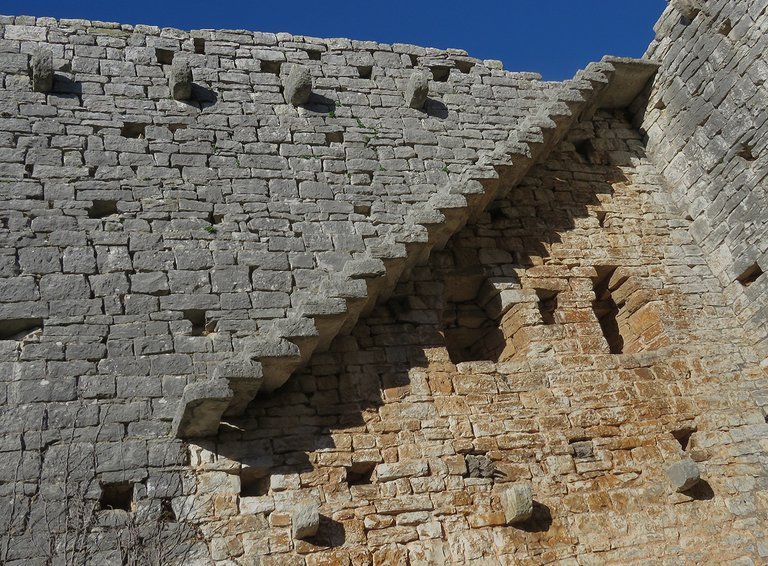
A series of stairs on its top gives a nice touch of bizarreness to the otherwise sober and firmly grounded piece of military history.
This thing looks like a stairway that could lead you to heaven if you manage to reach its lower end.
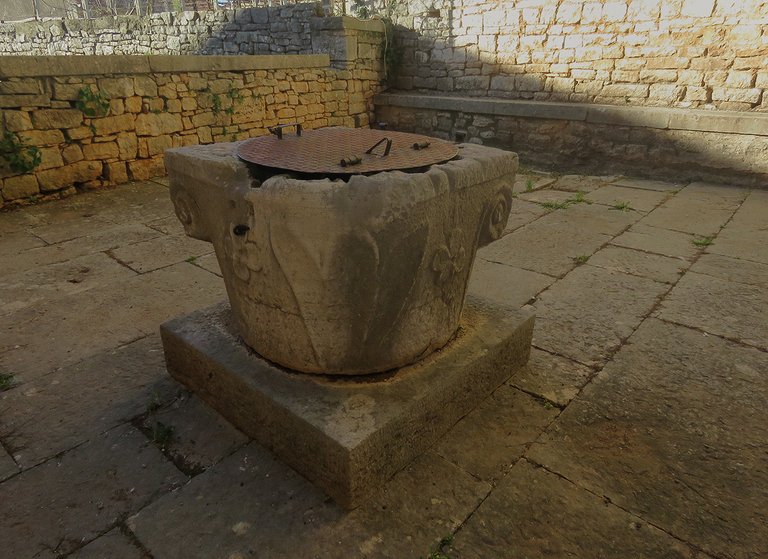
In the center of the tower, there is a stylish, nicely decorated well. The base of the tower is a large cistern.
Fontanella is the largest tower in the defensive complex of the town.
Here you can see the military storage building from a different angle.
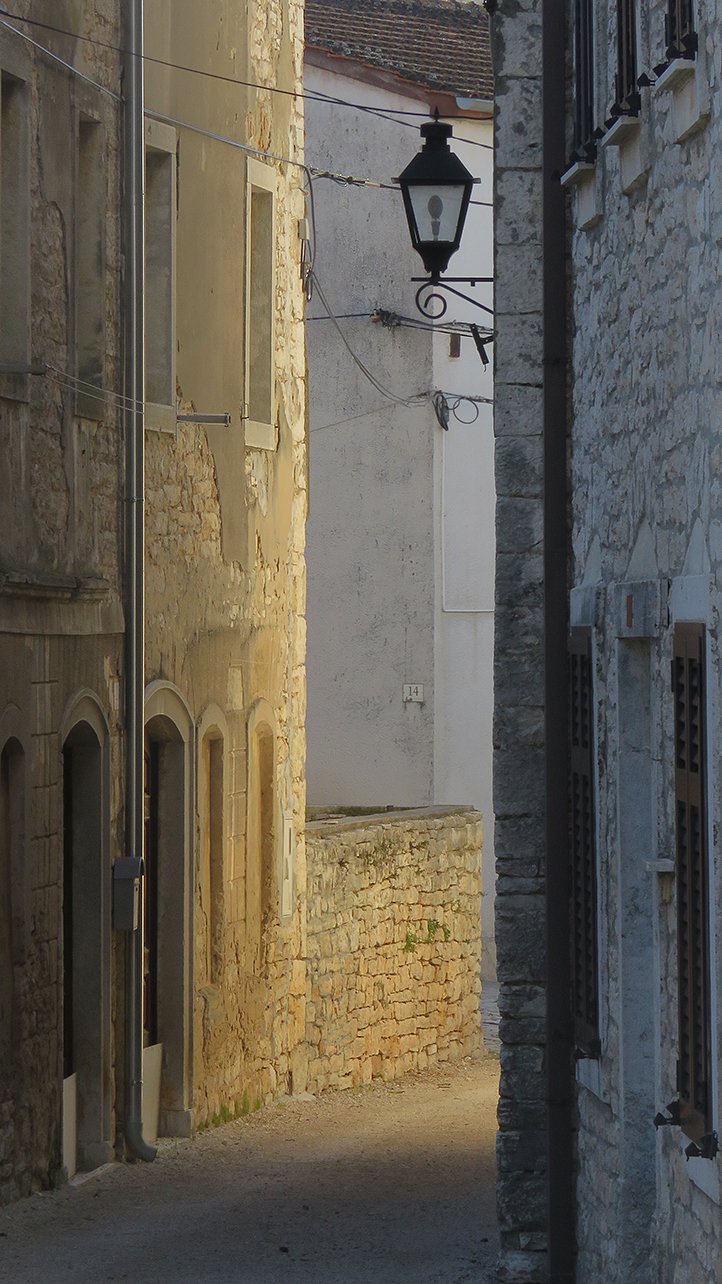
Here you can take a look at one of the narrow streets nicely illuminated by the morning sun.

On the way out of the old town ...
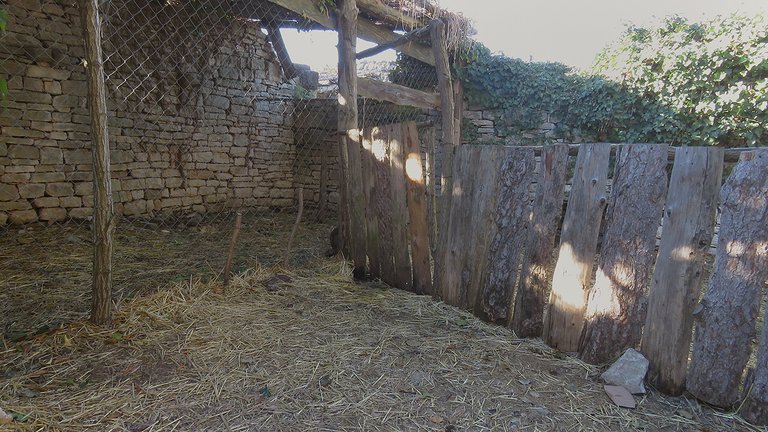
... I passed by a place that looked like a small zoo or a stable with no animals.
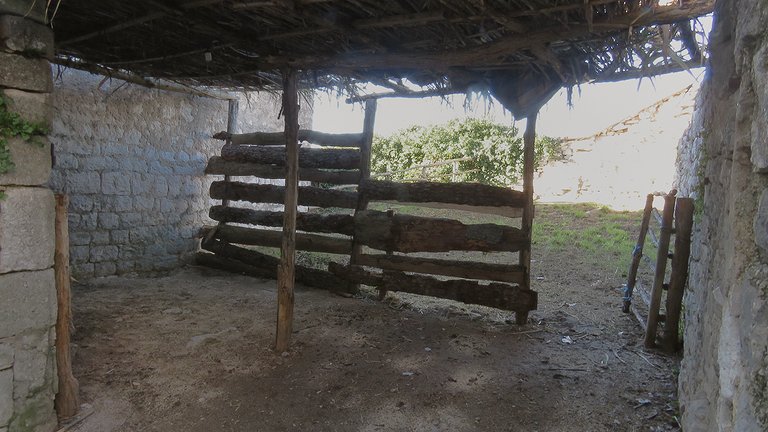
On the 26th of December, a traditional performance of a live nativity scene is held here. On that occasion, this corner of Sveti Lovrech looks like Bethlehem as represented in Catholic iconography.
Only a couple of weeks ago, here on Hive, thanks to a post published by @zorank, I found out the purpose of these wooden constructions and chain wire fences.
If you would like to see the live nativity of 2023, just visit @zorank's blog here on Hive. You'll find that Christmas post easily.
As is the case with most old towns in Istra, traces of human settlement in the area of Sveti Lovrech date to prehistoric times.
In the centuries dominated by the Roman Empire, this was a well-developed rural, agricultural area with a series of farmhouses called ville rustice by the Romans.
In the second half of the 8th century, the whole Istra peninsula became a part of the Frankish Kingdom and with it, feudalism was established.
In written sources, Sveti Lovrech was first mentioned as Castrum Sancti Laurentii in a document from 1030 called Engilmar's grant.
Engilmar was the bishop of the coastal city of Porech situated about fifteen kilometers west of Sveti Lovrech.
In 1271 the town surrendered to the Venetian Republic and was under its administration until 1797 when the Republic ceased to exist. In that long period, the town reached its political and cultural peak.
The next phase was the administration of the Austrian empire when Sveti Lovrech lost quite a bit of its importance and regressed into a smaller, pretty irrelevant town.
I parked the car by the side of the road a couple of hundred meters from Kringa to get this photograph. The church tower of the Parish Church of St. Peter and Paul is the most prominent piece of architecture in the picture. When the following shot was taken ...
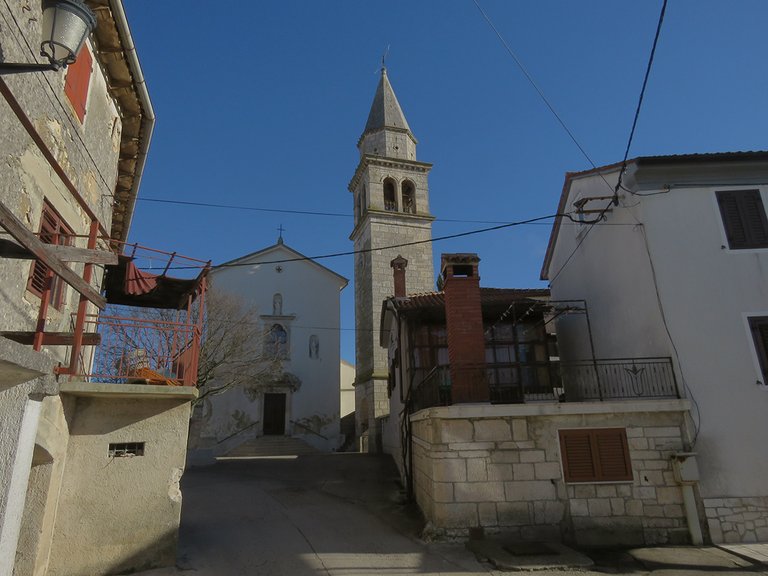
... I was approaching the center of Kringa. The main square wasn't far, so you can see the pretty tall tower from a different angle.
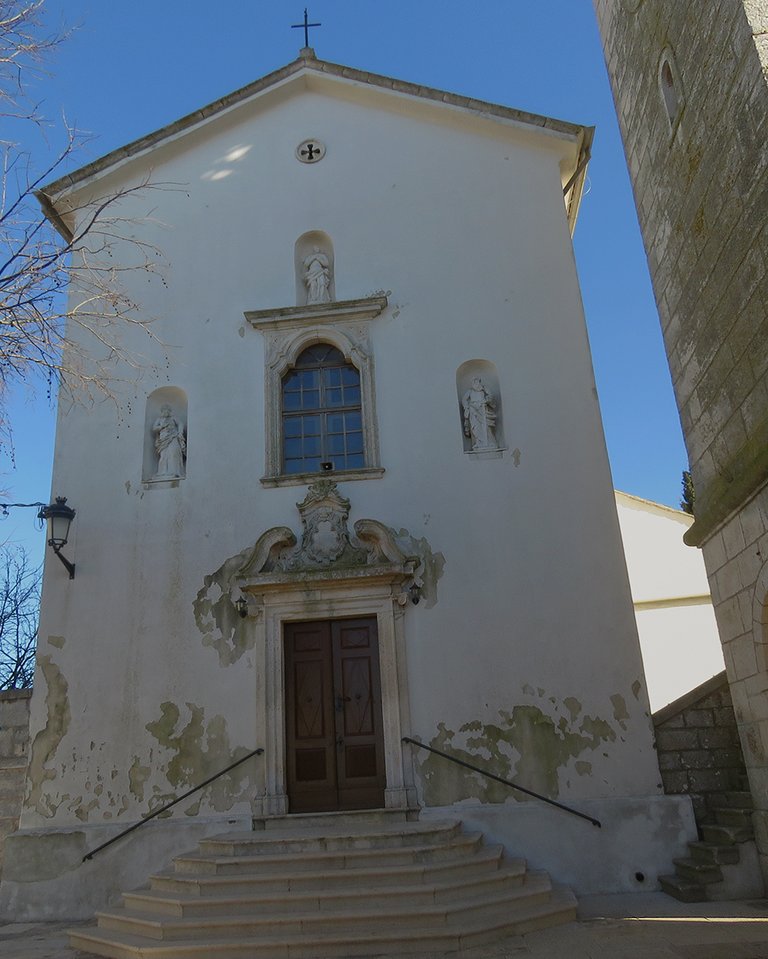
The Church of St. Peter and Paul was built in 1787. Here you can take a good look at its front facade. In the following photograph ...
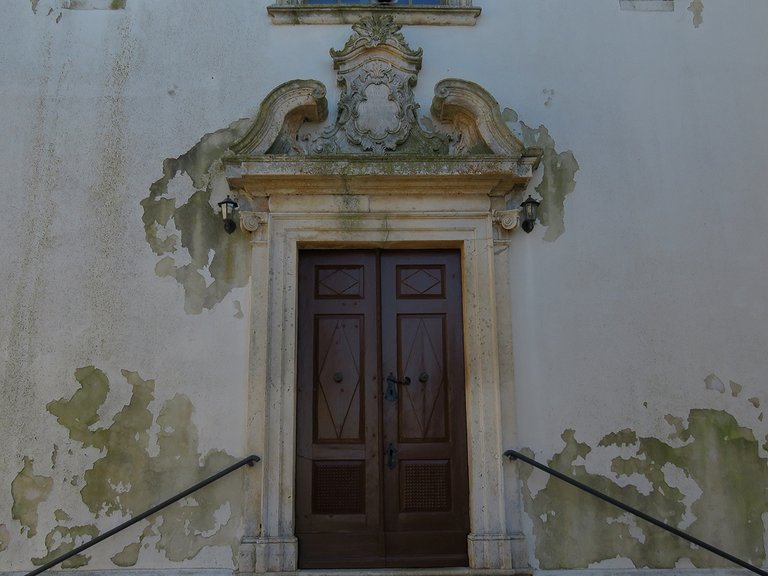
... I zoomed in on the baroque decorations above the entrance.
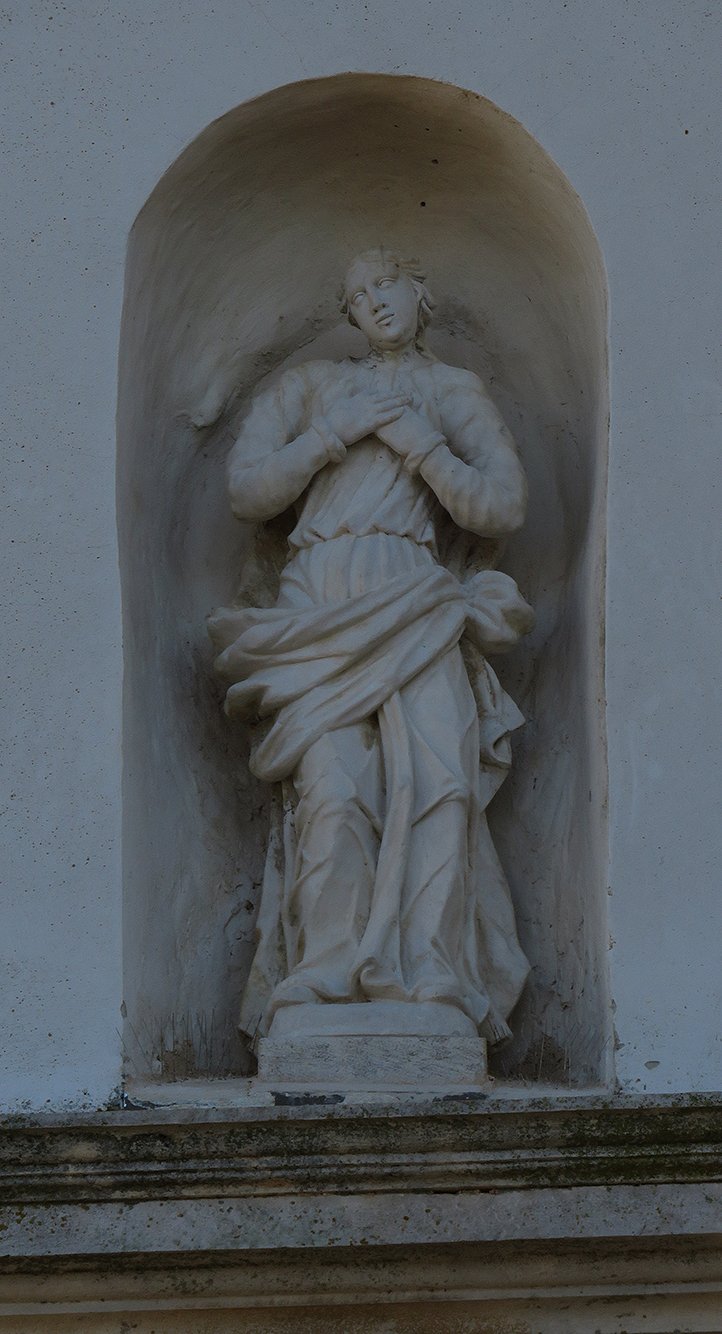
Here you can see the statue representing the Blessed Virgin Mary situated in the highest place on the facade.
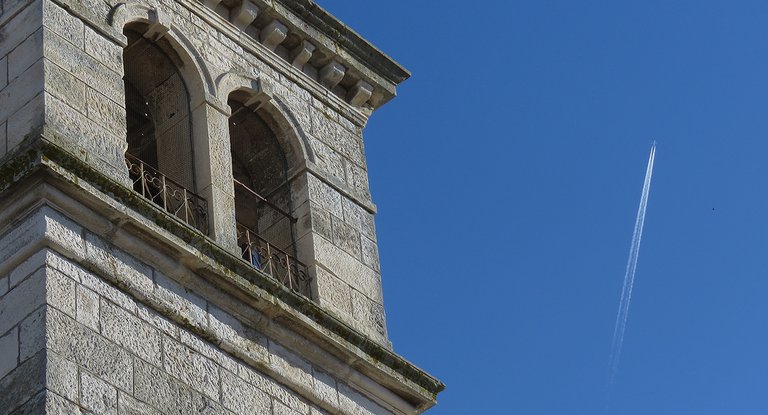
At some point ...

... while I was photographing the church tower from the square in front of the church ...
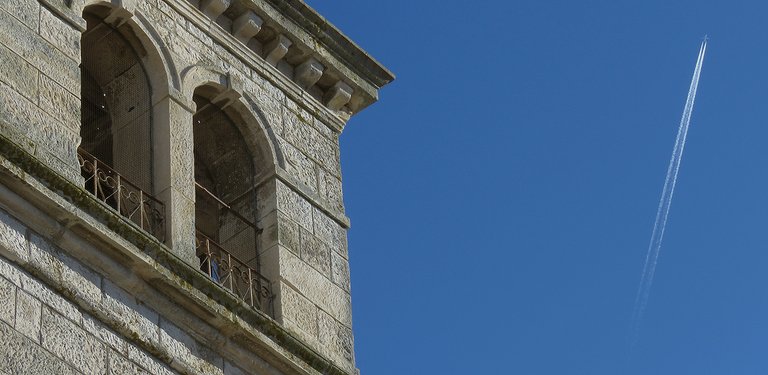
... a distant plane passed through the scene.
The passage at the base of the tower ...
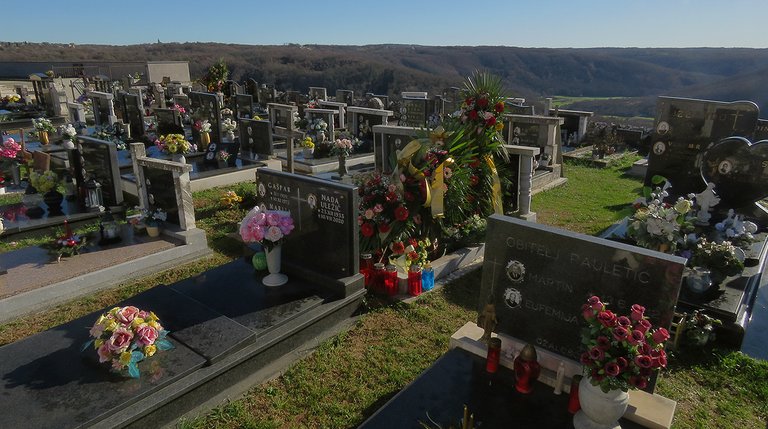
... leads to the graveyard.
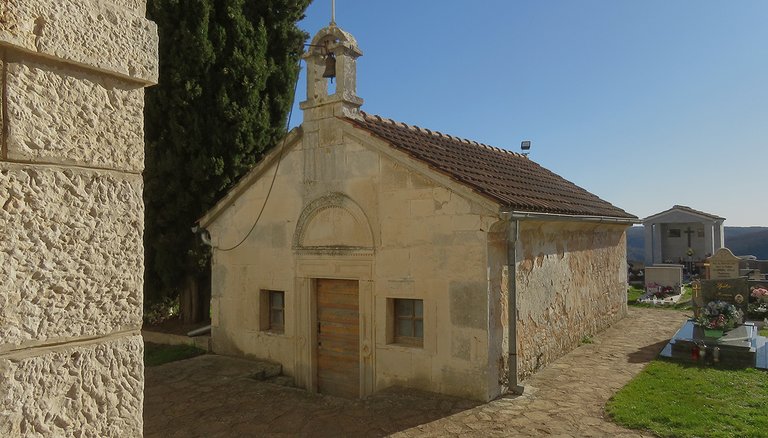
The small Church of St. Anne near the entrance was built in 1558.
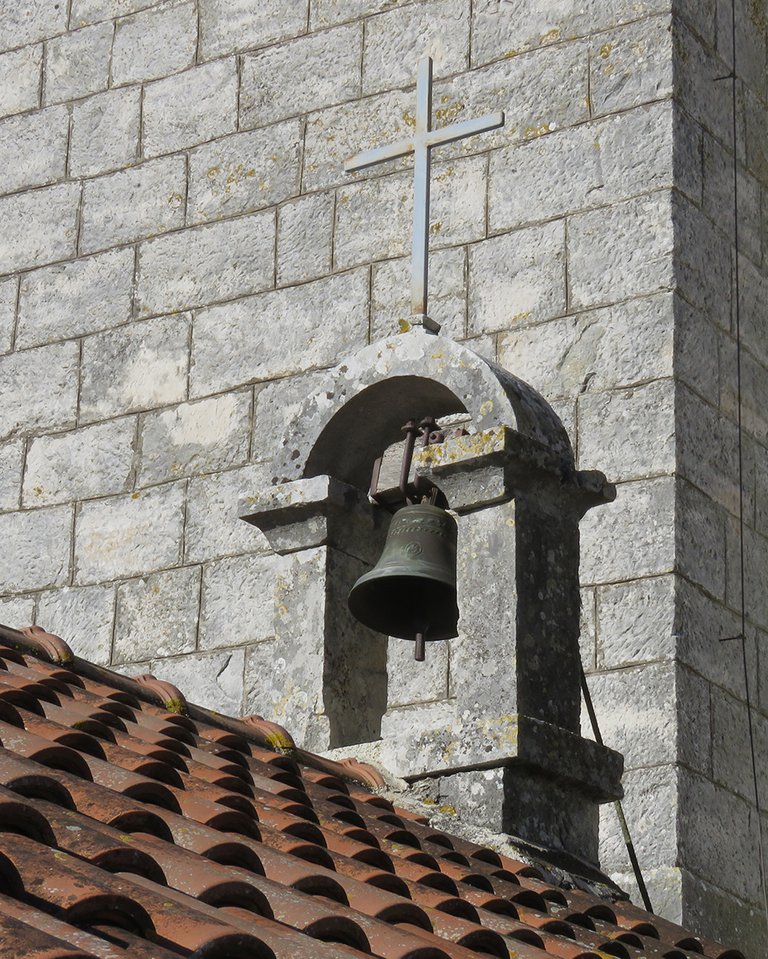
Here I zoomed in on its small bell tower. The tiles in the background belong to the much taller tower of the Parish Church.
The graves were decorated with a wide variety of real and artificial flowers.
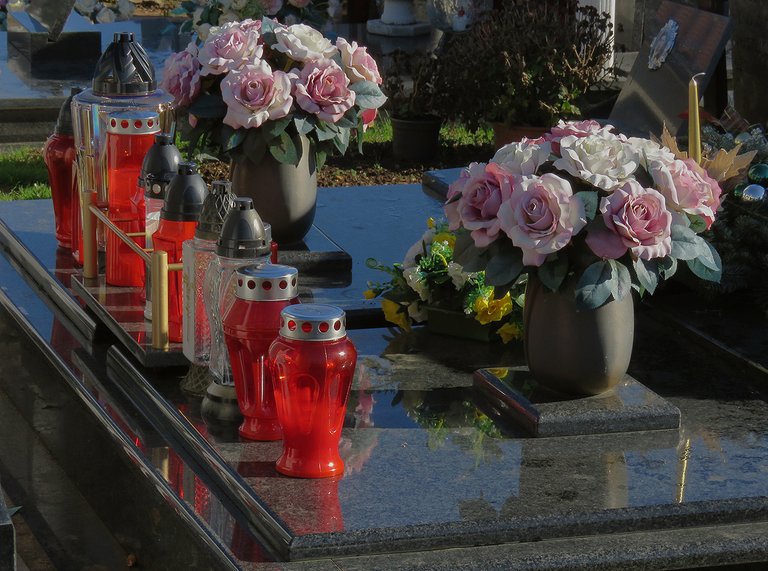
Here you can see a neat line of candles, each one in a plastic container that resembles a lantern.
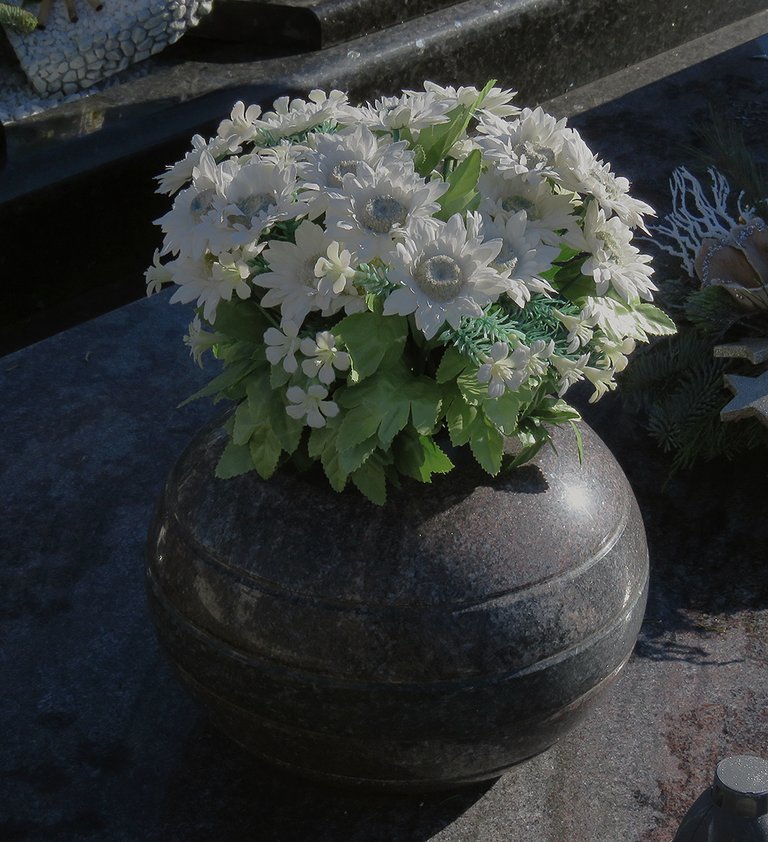
I can't remember why exactly I decided to photograph this particular bouquet of artificial flowers among many similar ones present in the graveyard.
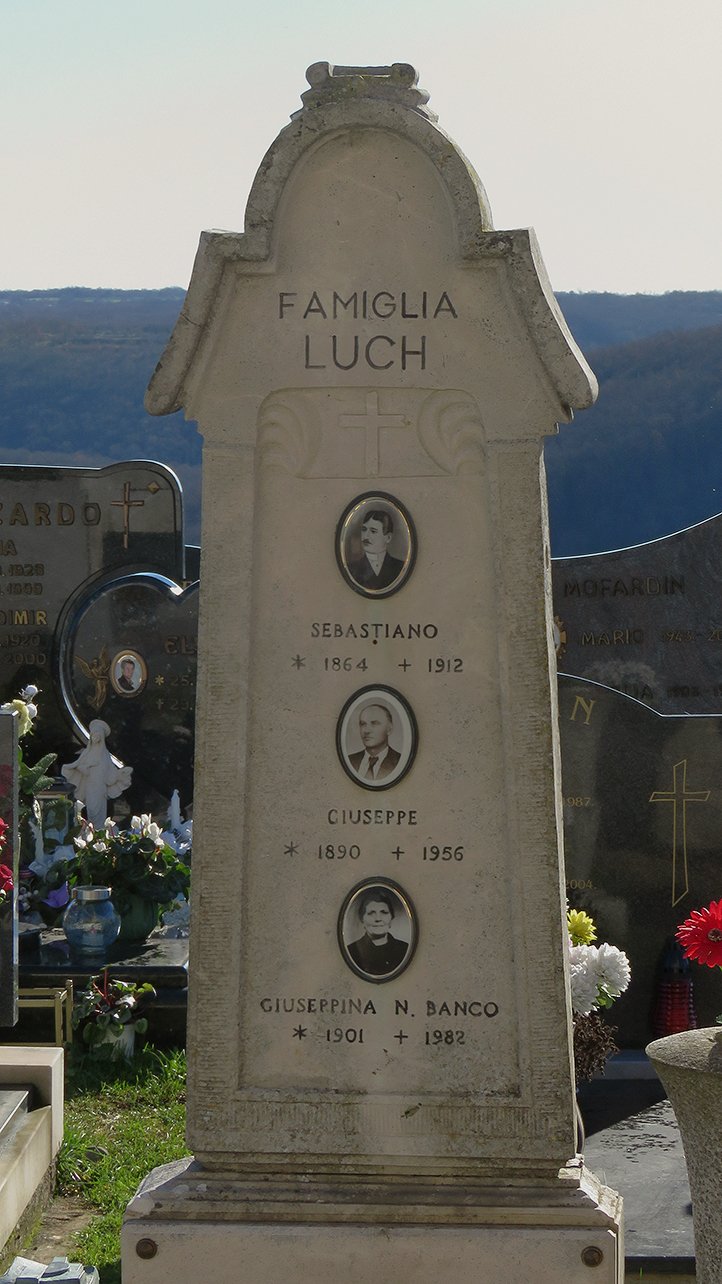
I'm pretty sure that this tombstone caught my attention ...
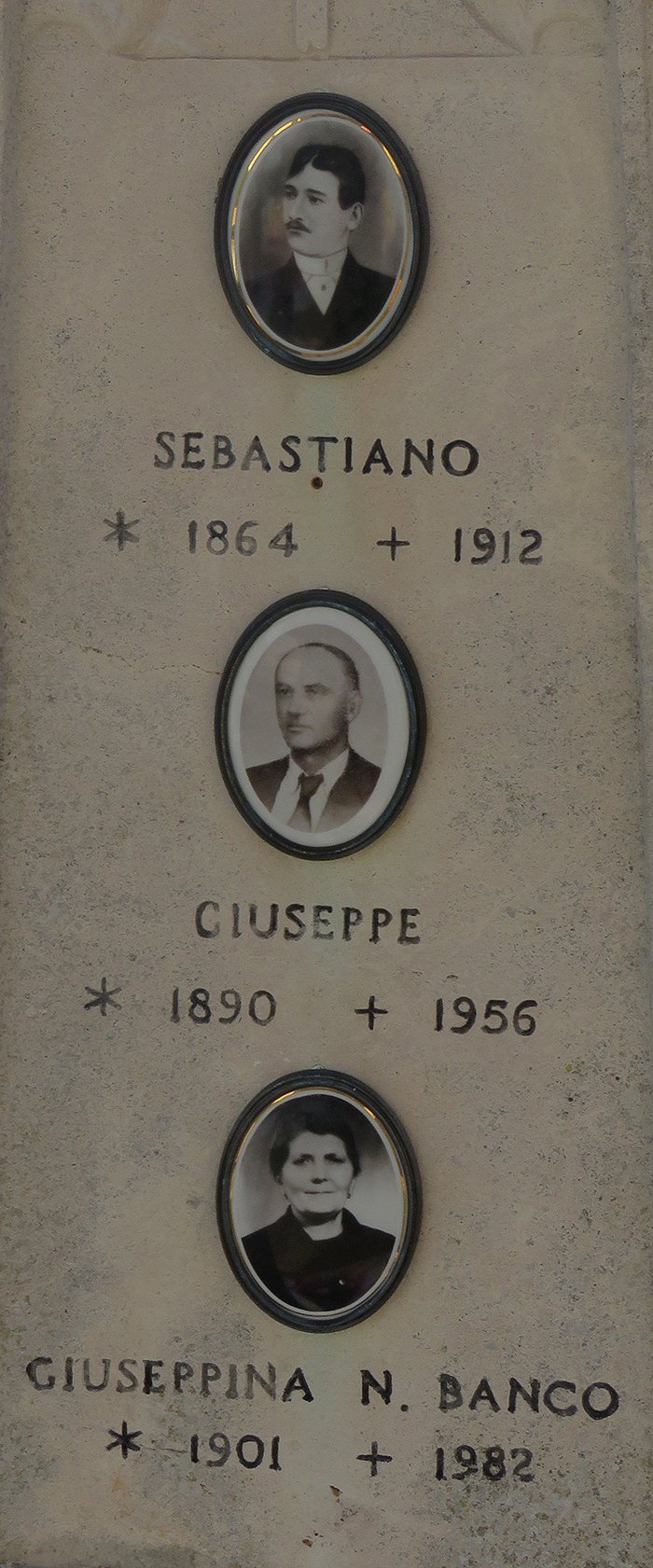
... becouse of its old photographs from various periods.
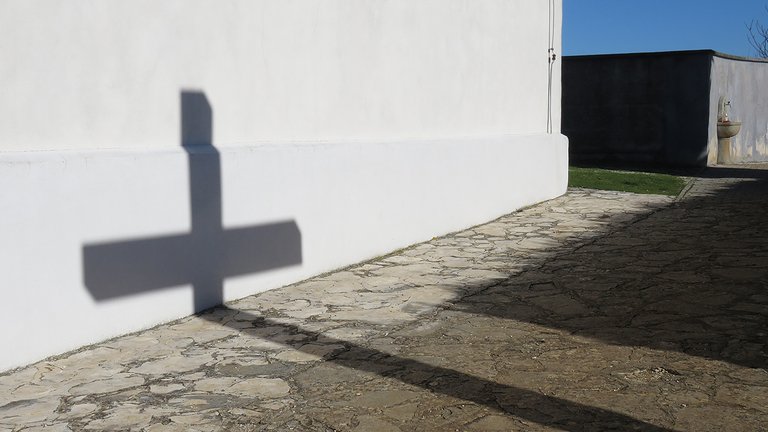
The visually interesting shadow that gives this shot a touch of metaphysical atmosphere, fairly similar to what can be seen in some paintings of Giorgio de Chirico ...
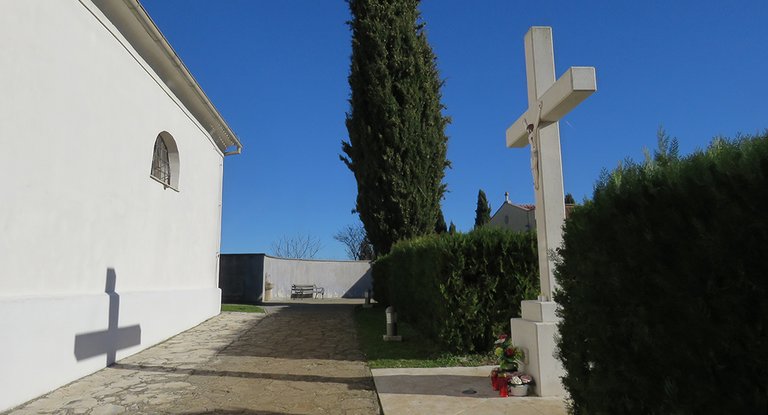
... was cast by this big cross with a very small Jesus figure on it.
After collecting quite a few cool details on my walk among the graves ...
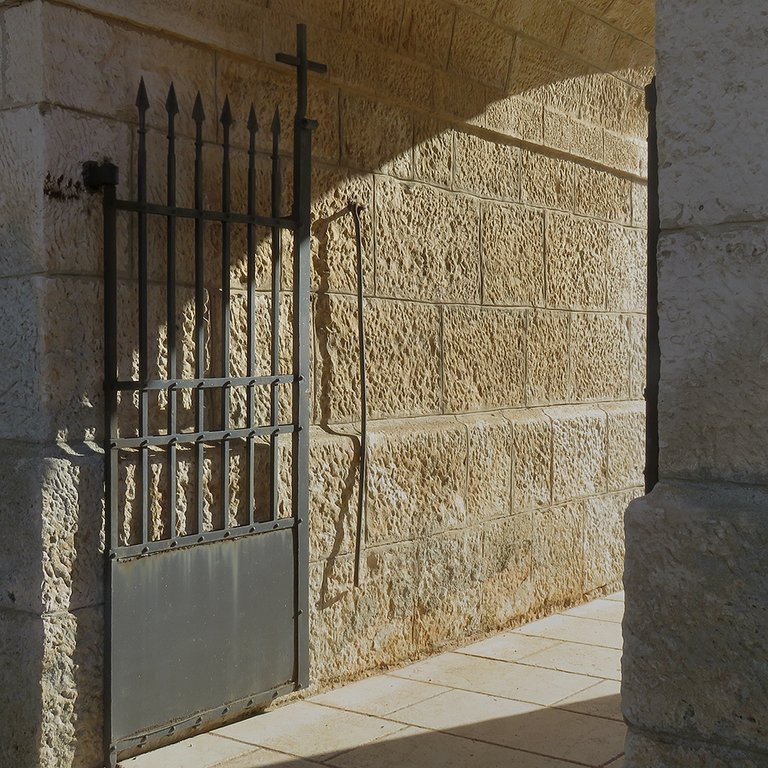
... I passed through the gate at the base of the tower, ready to take a walk around the town of the living.
There wasn't much difference between the two.

On the 14th of January 2023, Kringa was as quiet as its cemetery.
Here you can see another airplane in the clear blue sky.
To reach the small but distinct neiberhood shown in this photograph ...
... I had to walk through a passageway between two large houses near the main square.
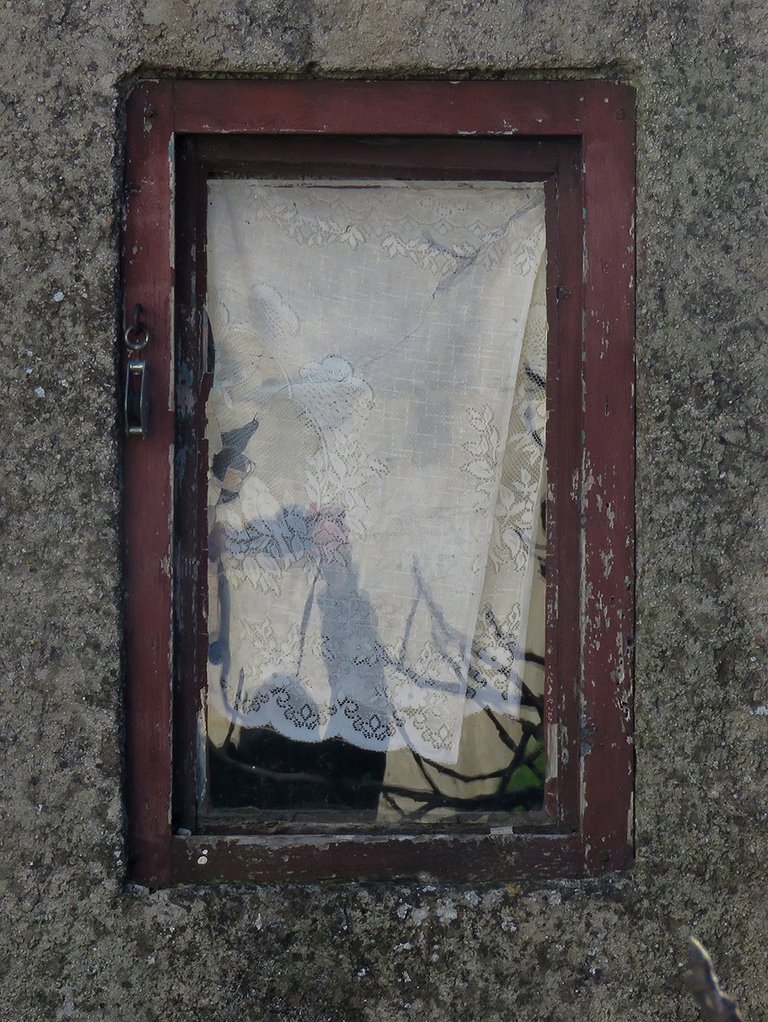
Here you can see a small window ...
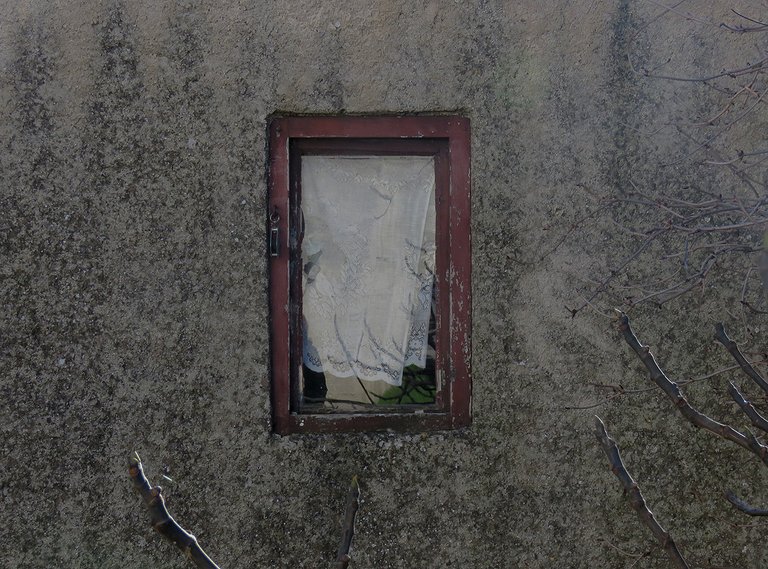
... on the other side.
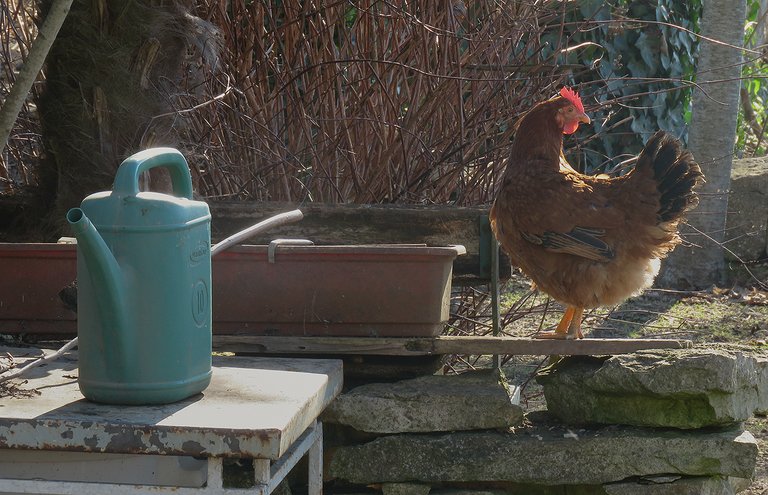
I saw a group of chickens in one of the yards in that neiberhood.

They were the only residents I encountered in Kringa that day.
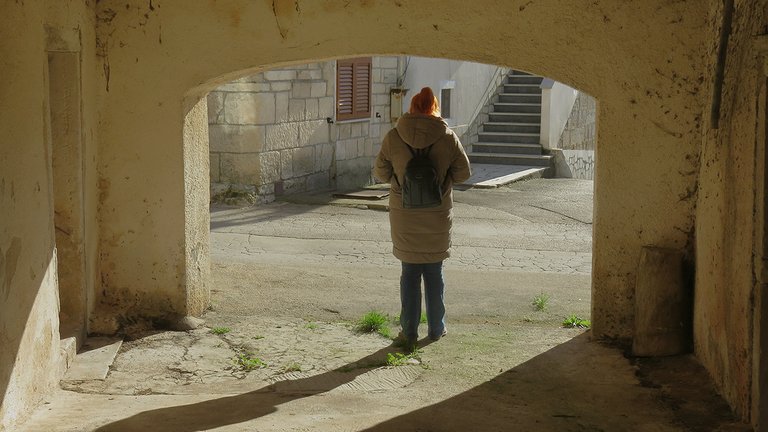
On the way back to the road near the square ...

... I stopped to photograph a friend who was there with me standing in the passageway. Besides looking great in the light of a sunny winter day, the human figure gives this shot a better sense of proportions.

Here you can see a pretty large homestead situated a little less than a hundred meters further down the road.
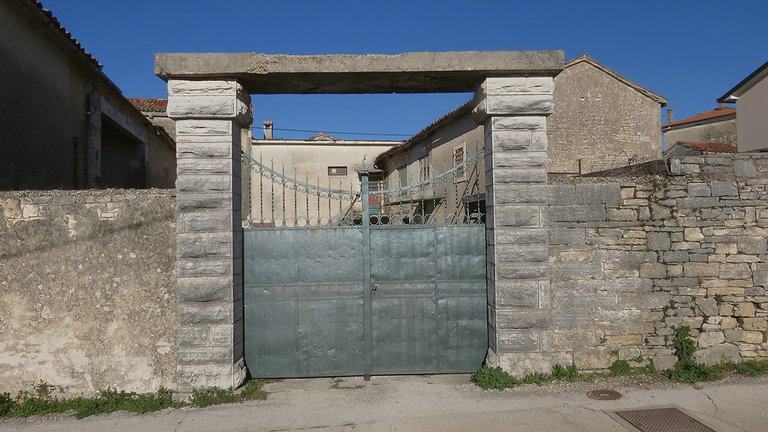
Its gate was the last thing I photographed before returning to the car and driving back home.
If you would like to learn more about the history of Kringa, its most iconic legend, and see the town in a different light ...
... I recommend taking a look at this old post of mine published three years ago here on Hive.
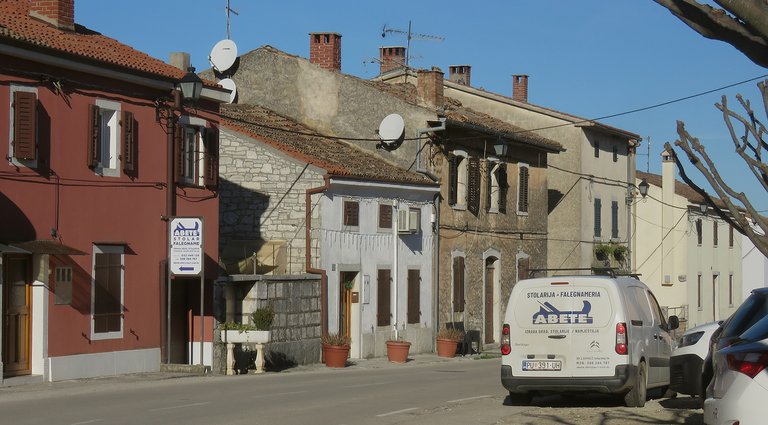
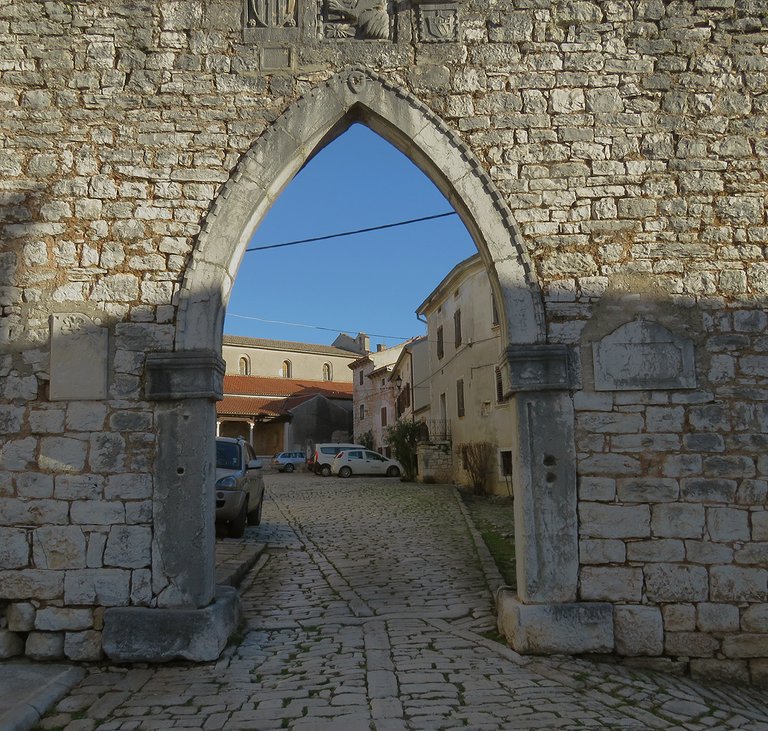
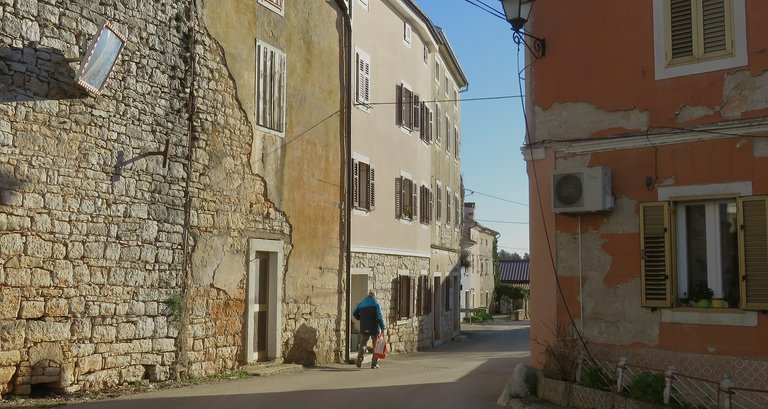
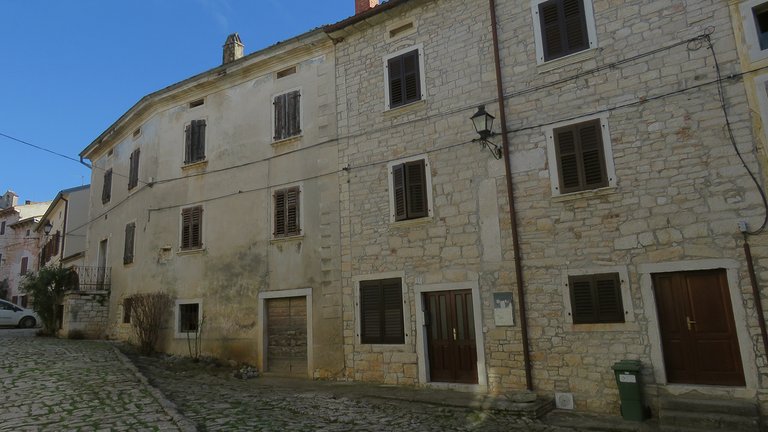
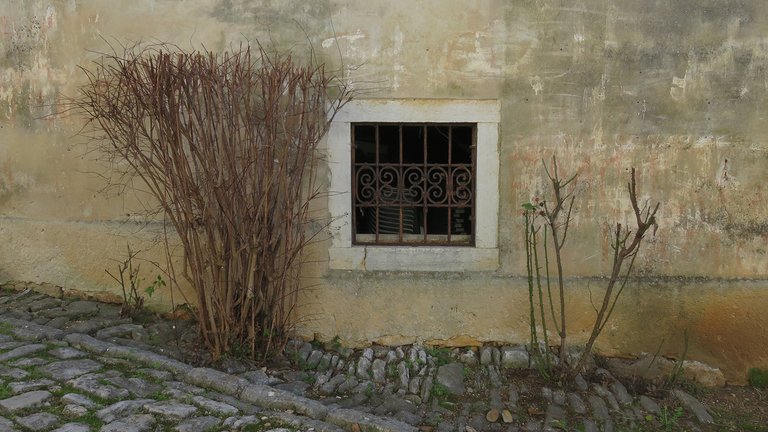
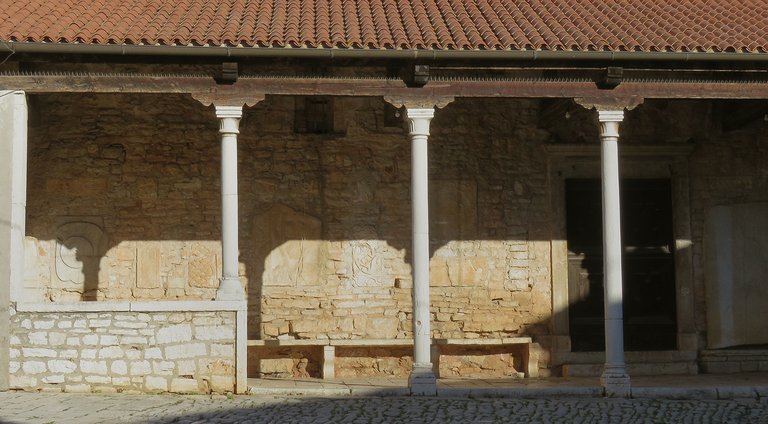
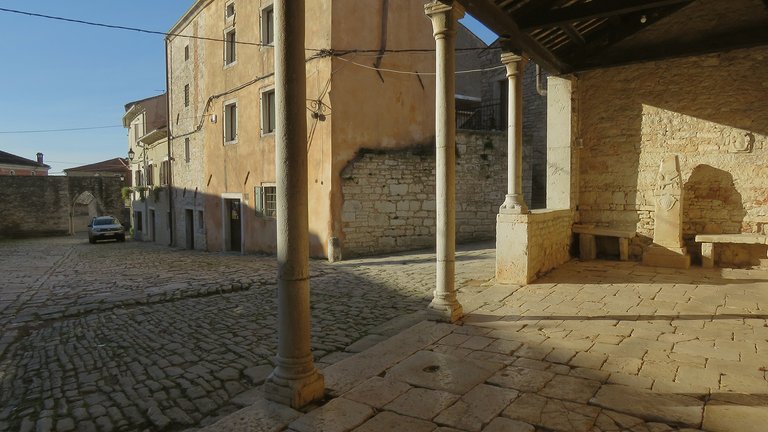
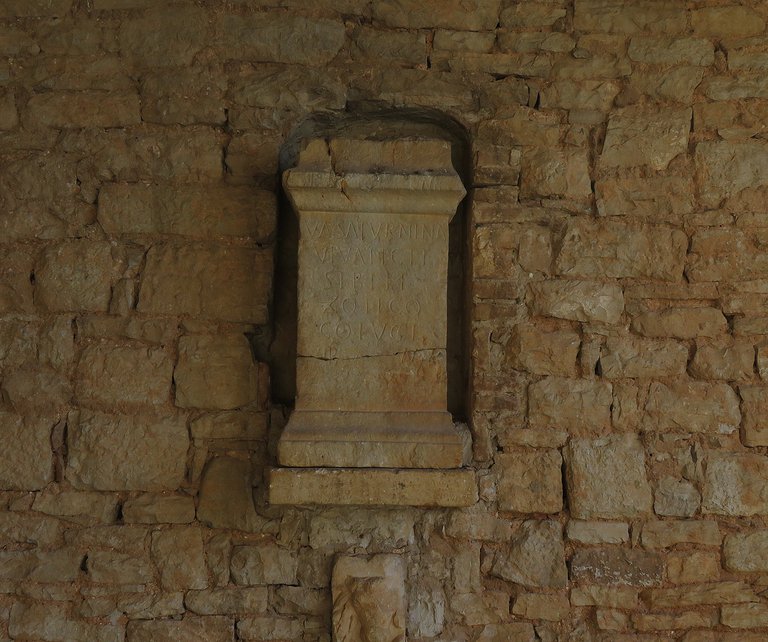
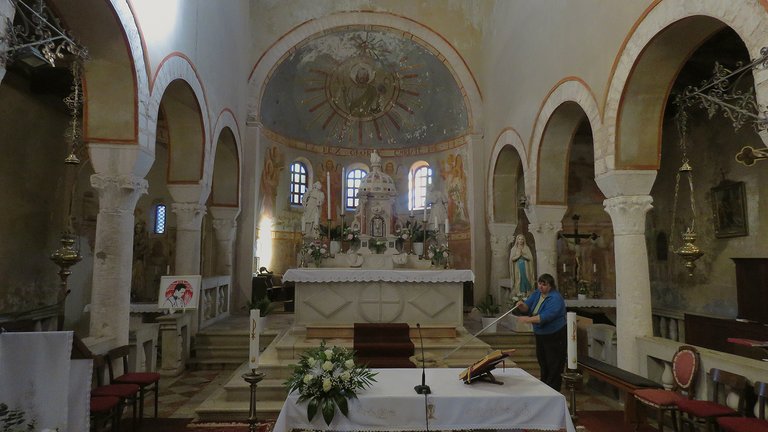
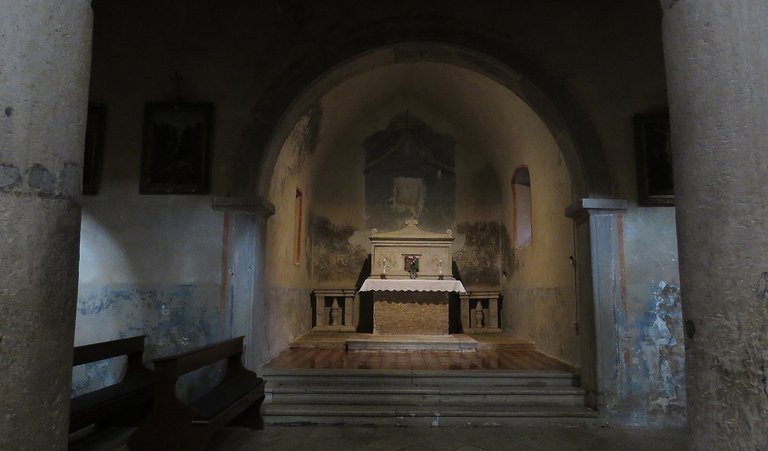
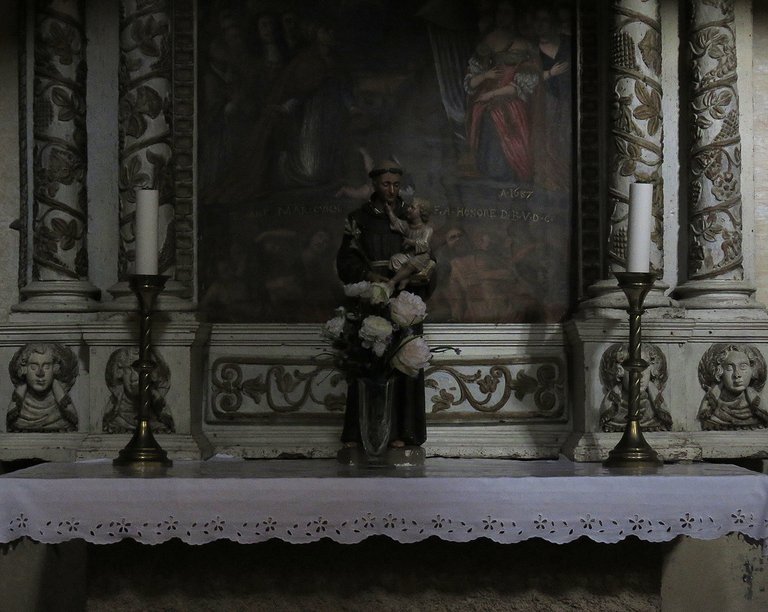


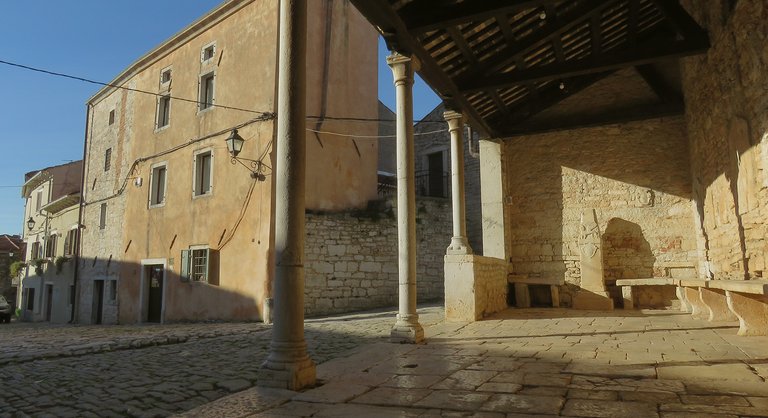
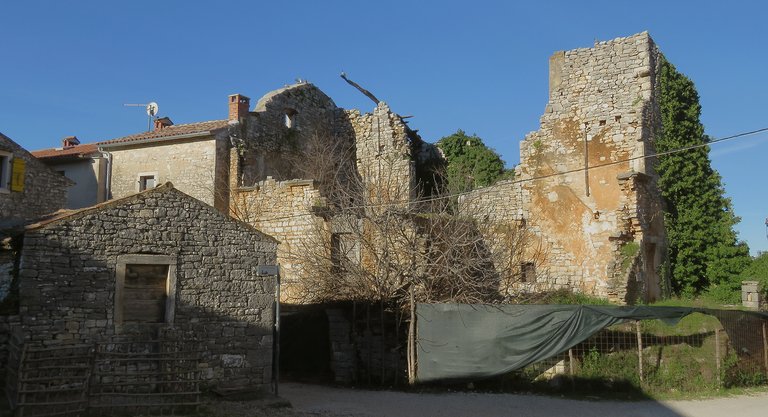
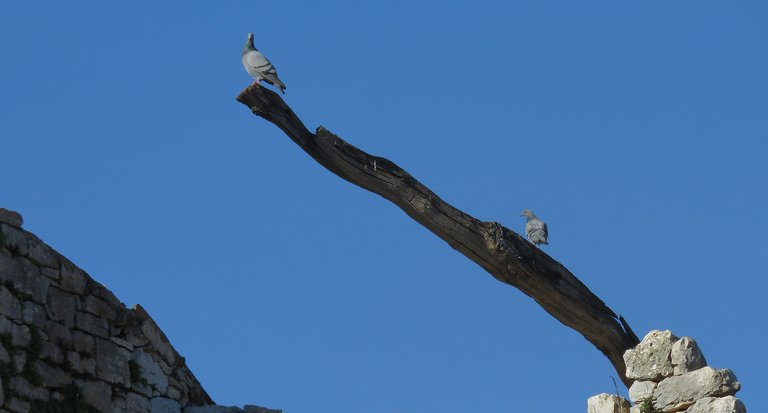
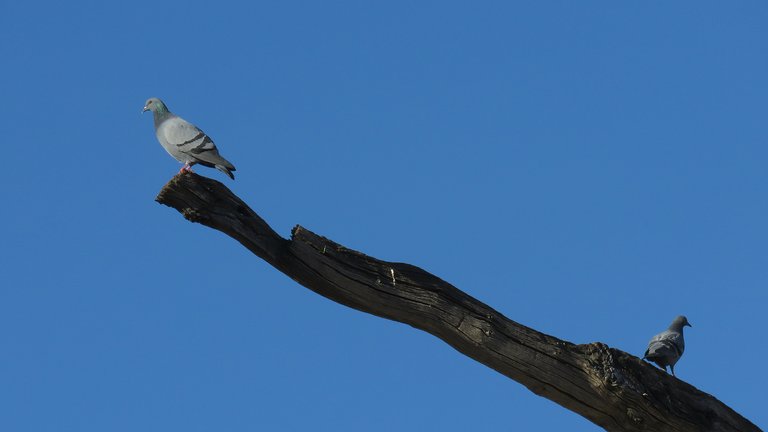
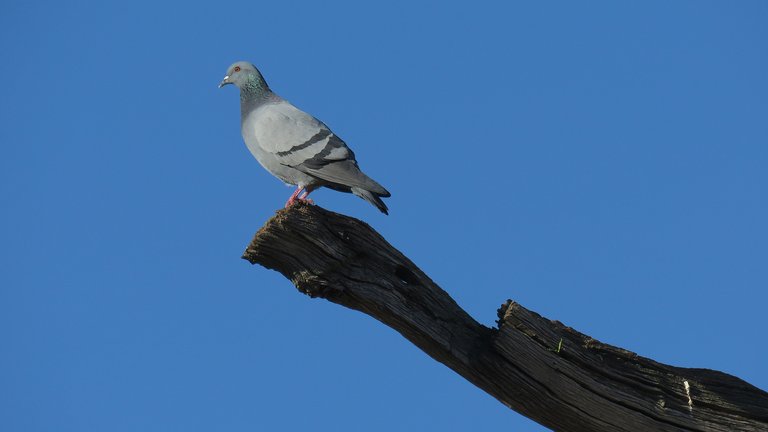
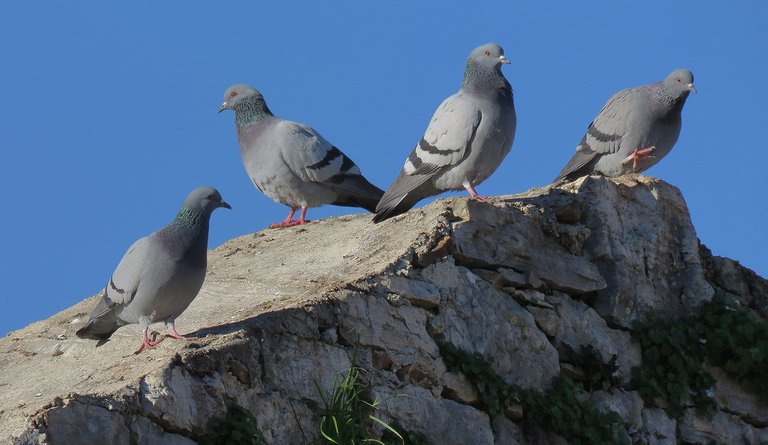
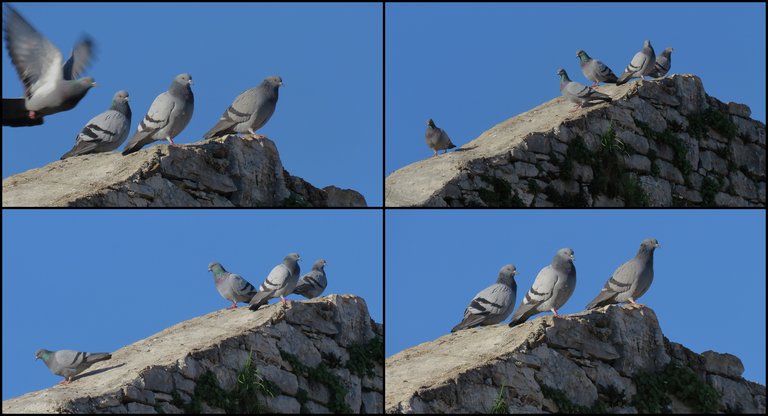
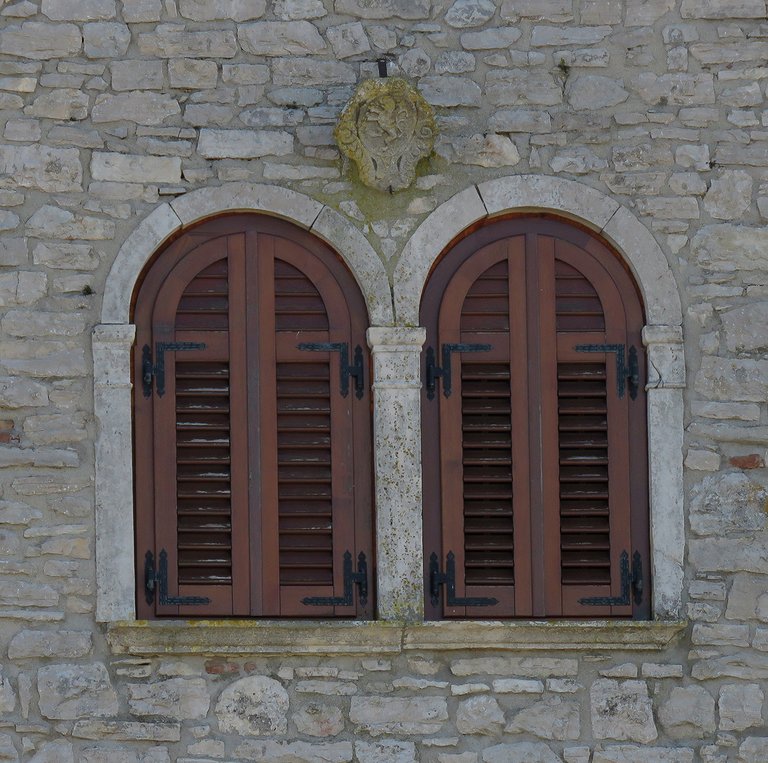
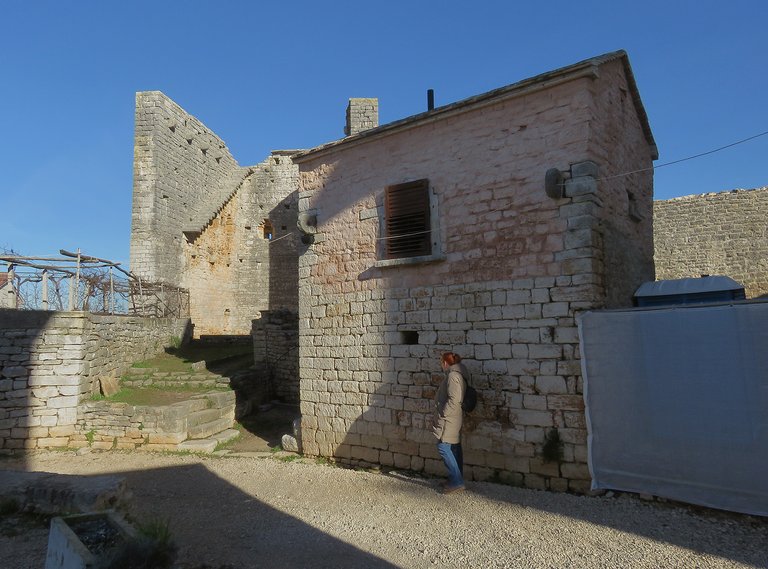
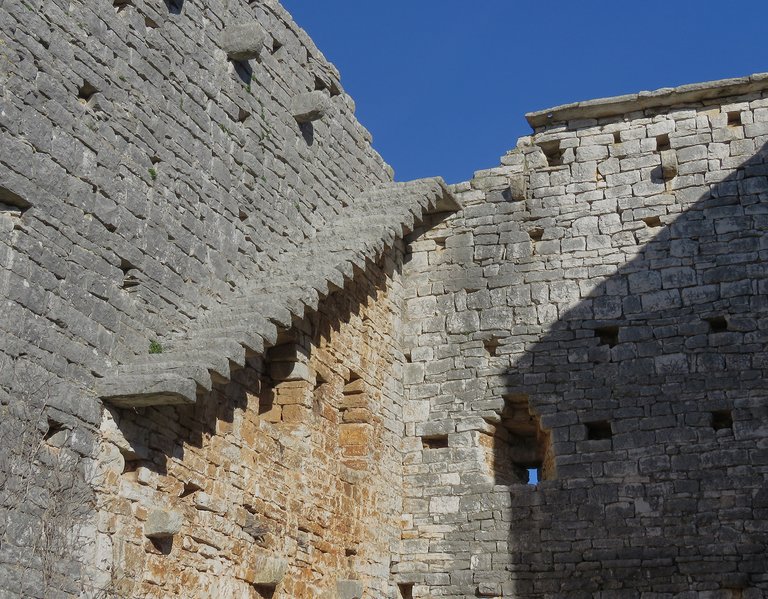
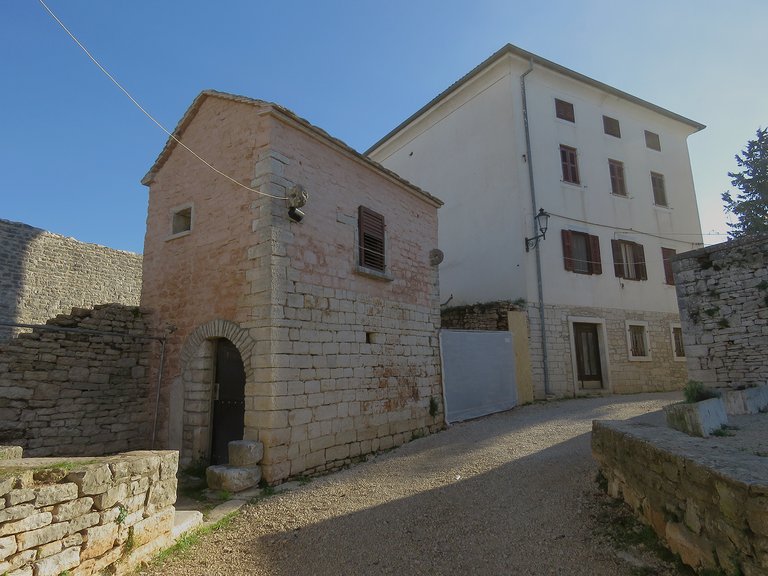
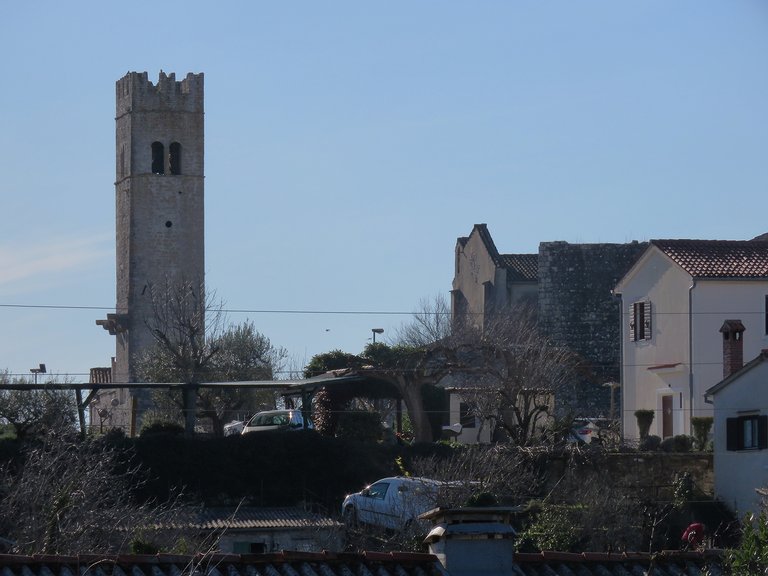
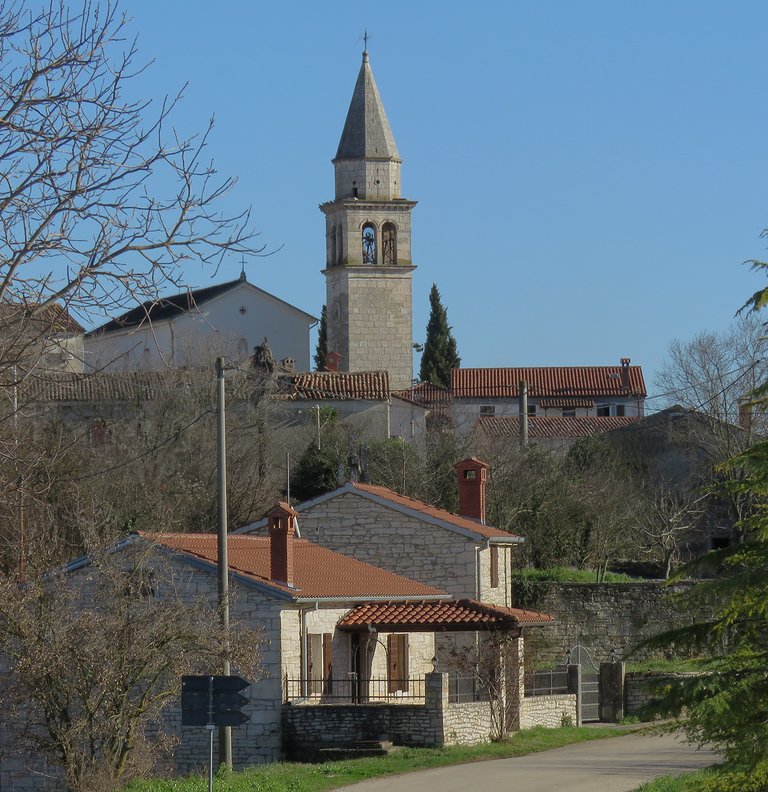
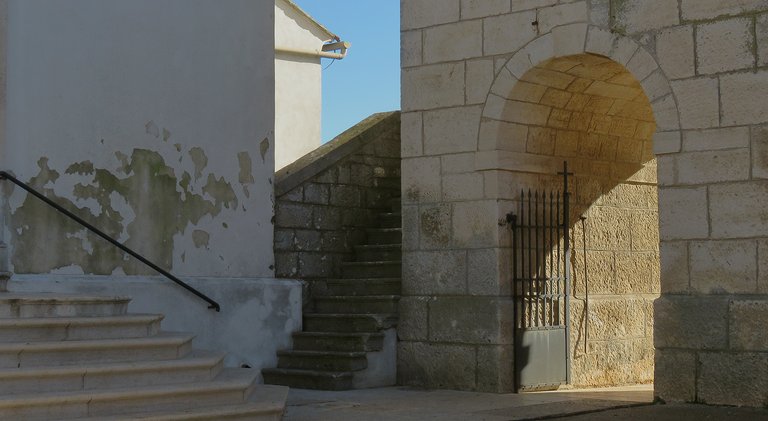
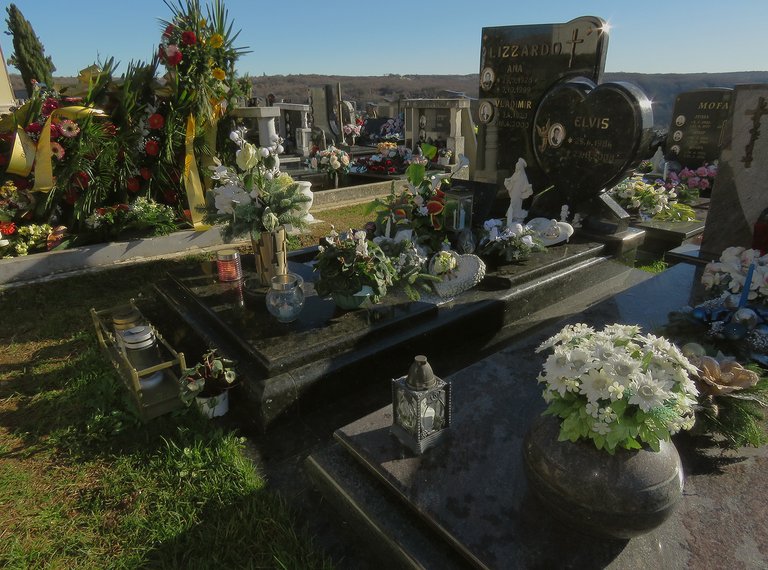
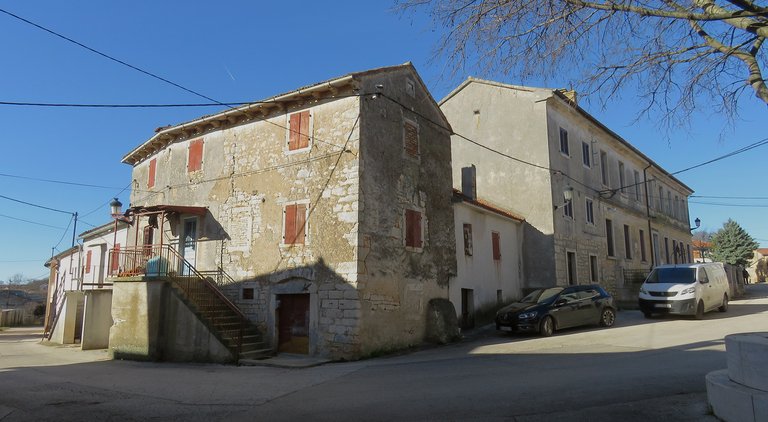
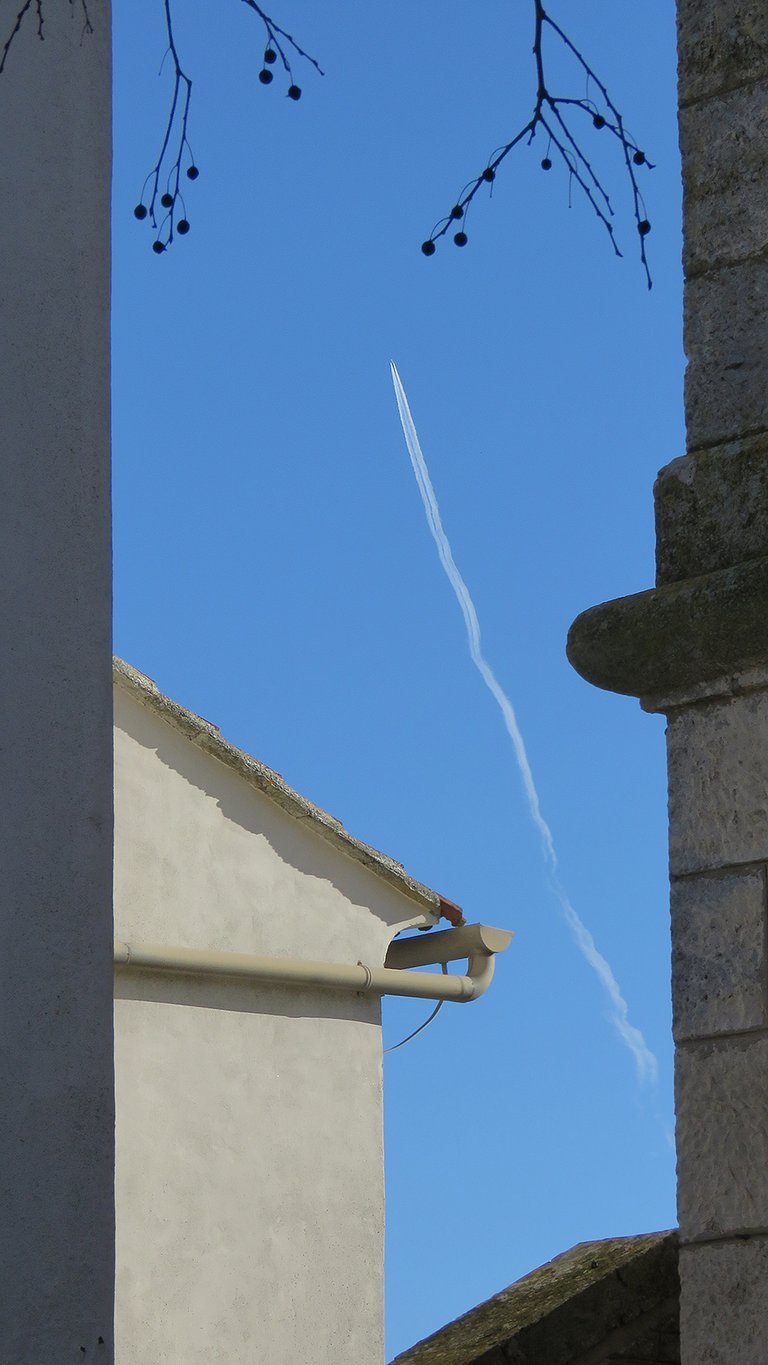
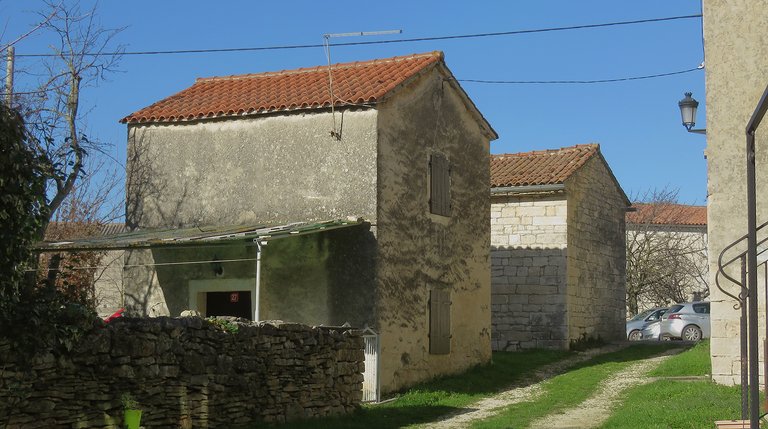
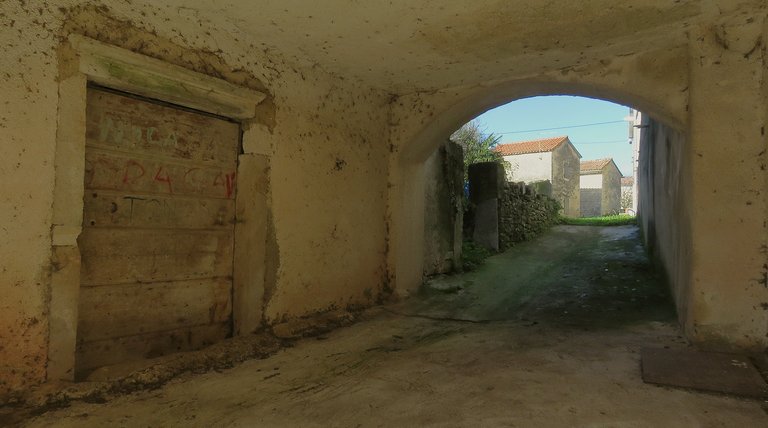
@tipu curate :)
Upvoted 👌 (Mana: 46/56) Liquid rewards.
I think both cities are amazing and adorned with stunning pieces of architecture, I mean the buildings, especially the religious ones. Though the cities looks like they were established many years ago as I surmised from the buildings. You did a great job capturing these beautiful places and sharing here with us and thank you very much for that. Have a great day.
Oh!... A magical and apotheosic display of street photography loaded with vintage look and fantastic lights/shadows!....
And this is something worthy of a special applause!!!
!discovery 40
!VSC
!PIZZA
!BBH
Your Content Is Awesome so I just sent 1 $BBH(4/5)@borjan! (Bitcoin Backed Hive) to your account on behalf of @jlinaresp.
Travel Digest #2122.
Become part of our travel community:
- Join our Discord
Hiya, @ybanezkim26 here, just swinging by to let you know that this post made it into our Top 3 in Your post has been manually curated by the @pinmapple team. If you like what we're doing, please drop by to check out all the rest of today's great posts and consider supporting other authors like yourself and us so we can keep the project going!Kringa is a beautiful village, according to a historical legend that vampires with two front teeth used to live in that village. That's what the stories say, interesting. ;
The pictures are really nice
One basic thing I enjoyed is true entrance to those towns
It looks very nice and like the Roman movies we watch online, lol
I mean the building
This post was shared and voted inside the discord by the curators team of discovery-it
Join our Community and follow our Curation Trail
Discovery-it is also a Witness, vote for us here
Delegate to us for passive income. Check our 80% fee-back Program
WOW man once again you have like 4 posts in 1 with that amazing adventure.
It reminds me a little of my trip to Malta. I could wander through the streets enjoying all the little details you picked up and just feel the history pouring from the walls. The archways and the cobbles. It sure was quiet looking or you strategically took pics of things when people were out of the way.
Thanks for taking me on another adventure my friend. I can almost say I visited Kringa.
LOL and that's the fact!!
Ohhh @borjan your sense of humour is top-notch!😂😂😂
😀
Old is Gold, I love the old buildings.
La iglesia fundada en 1460 es una expresión de belleza única me encantaron tus fotos..y tu contenido.
The rewards earned on this comment will go directly to the people( @jlinaresp ) sharing the post on Reddit as long as they are registered with @poshtoken. Sign up at https://hiveposh.com.https://reddit.com/r/blogs/comments/198zxp5/sveti_lovrech_kringa_croatia_places_photography/
Some really beautiful old buildings on this post! I especially love the stone work on the medieval gateway entrance. Lovely photos as always ... !VSC
Have a great day Borjan & stay !ALIVE 😁
Nice to see you back after few days. Those are beautiful captures as usual.
Wonderful photo journey through amazing places that still hold much about the way of life of prior generations. I enjoy the exploration of the loggia and St. Martin church, really beautiful architecture that has existed for a long time :)
#hive #posh
Yay! 🤗
Your content has been boosted with Ecency Points
Use Ecency daily to boost your growth on platform!
, by @borjan.
Congratulations, your post has been added to Pinmapple! 🎉🥳🍍
Did you know you have your own profile map?
And every post has their own map too!
Want to have your post on the map too?
!AFIT
For more info about tipping AFIT tokens, check out this link
That's a neat looking gate!!!
Been quite a while since you posted such a long form post.
Adorable place and cool click's with historic backgrounds. Hope you enjoy your day.
The cities are beautiful with all their monumental buildings and religious relics. I love the towers and their bells and how they point heavenward.
Look at that tree raising his 'fingers' upwards, like in supplication. Wow!
The shape of the gates is quite different and looks very old. But the places look very nice. Hope your trip was interesting.
The photos are amazing, the shadow of the trees looks like some horror movie scenes, like fingers in the wall. One thing that me amazed is how kind the priest of St. Martin was to give you at least 10min to look around. Others will probably tell you "hey man, no photos"😄
Hmmm.... These are quite a large collection of photos, but I love the religious buildings, and it shows that they are very religious people....
Thank you for sharing these.
Beautiful photos, and the ancient structures look so stunning.
The pictures you really took are pretty nice and I must also say the place must have been lovely to have visit
As many as there are old buildings or other such things, the maps of it are very beautiful and it is very nice to see and visit all of them and find special things here. Coins can also be found by looking.
Thanks for the mention @borjan 👍 I'm glad to see you have visited Sveti Lovreč. It's interesting to see how this little town looks now, after traditional live nativity scene held there during the Christmas and the Three Kings holidays. The little town was crowded then and now it looks so quite and relaxed. Great post as always!